Take Me to the Recipes
Welcome to a culinary journey through the heart of Cambodia Food, where flavors are as rich and diverse as the country’s storied history.
From the ancient temples of Angkor to the bustling streets of Phnom Penh, Cambodia’s cuisine is a vibrant tapestry woven with influences from its tumultuous past, lush geography, and tropical climate.
In this article, we’ll delve into the fascinating world of Cambodian cuisine, exploring how centuries of cultural exchange, agricultural traditions, and environmental factors have shaped the dishes that grace Cambodian tables today. Join us as we uncover the secrets behind the tantalizing flavors and aromas that define Cambodian gastronomy.
Take Me to the Recipes
Here are 10 takeaways from an article about how history, geography, and climate have influenced the cuisine of Cambodia
Cultural Fusion
Cambodian cuisine reflects a rich tapestry of cultural influences, including Indian, Chinese, Thai, and French, due to centuries of trade and colonization.
Khmer Empire Legacy
The legacy of the ancient Khmer Empire, as seen in the majestic temples of Angkor Wat, is echoed in traditional Cambodian dishes, which often feature aromatic spices and exotic flavors.
Rice, the Staple
Rice is the cornerstone of Cambodian cuisine, with nearly every meal accompanied by rice in various forms, such as steamed rice, rice noodles, or rice flour for desserts.
Fish and Freshwater Cuisine
With abundant freshwater resources, fish and seafood play a prominent role in Cambodian cuisine, with dishes like Amok (a creamy fish curry) and Prahok (fermented fish paste) being staples.
Tropical Fruits and Vegetables
Cambodia’s tropical climate fosters the growth of a wide variety of fruits and vegetables, including mangoes, bananas, papayas, and fragrant herbs like lemongrass and kaffir lime leaves.
Influence of Geography
The diverse geography of Cambodia, encompassing fertile plains, lush forests, and freshwater rivers, contributes to the country’s agricultural bounty and diverse culinary offerings.
Street Food Culture
Cambodia’s bustling street food scene offers a tantalizing array of snacks and dishes, from savory noodle soups to grilled meats and seafood skewers, providing an authentic taste of local flavors.
Colonial Legacy
The French colonial era has left its mark on Cambodian cuisine, with influences such as baguettes (known as “num pang”) and coffee culture being integrated into everyday dining.
Seasonal Eating
Cambodian cuisine emphasizes seasonal and fresh ingredients, with dishes often featuring locally sourced produce and seafood, reflecting the rhythm of nature’s bounty.
Resilience and Adaptability
Despite periods of hardship and conflict, Cambodian cuisine has persevered, showcasing the resilience and adaptability of its people in the face of adversity, and continues to evolve while maintaining its rich cultural heritage.
Where is Cambodia?

Cambodia, located on the Indochinese mainland of Southeast Asia

Index to the Contents
- Take Me to the Recipes
- More articles
- 10 Interesting Facts about Cambodia
- Cambodia’s History and the Effect It Has Had on the Cuisine
- How the Cambodian Climate and Geography has Influenced the Cuisine
- Understanding the Essence of Cambodian Cuisine
- Exploring Cambodia’s Ingredients: The Flavors of Cambodian Cuisine
- Cambodian ’s National Food
- Exploring Cambodian Street Food
- The Most Popular Cambodian Recipes
- How Healthy is Cambodian Food
- Cambodian Cuisine Recipes to Try at Home
- Conclusion
- FAQ’s
More Articles for Your Pleasure
- North and South American Cuisine – A Culinary Expedition
- European Cuisine: Savor the Continent’s Best Culinary Secrets!
- African Cuisine: Discover the Bold Flavors & Global Charm!
- Asian Cuisine Unlock its Secrets – Taste, Health & Global Influence!
- Oceania Cooking: A Culinary Journey Through the Pacific
- Caribbean Cuisine: Beyond Jerk Chicken
- Middle Eastern Food: A Flavor Journey
Savor iconic Cambodia’s Dishes – Click on each tantalizing picture to open up the Recipe
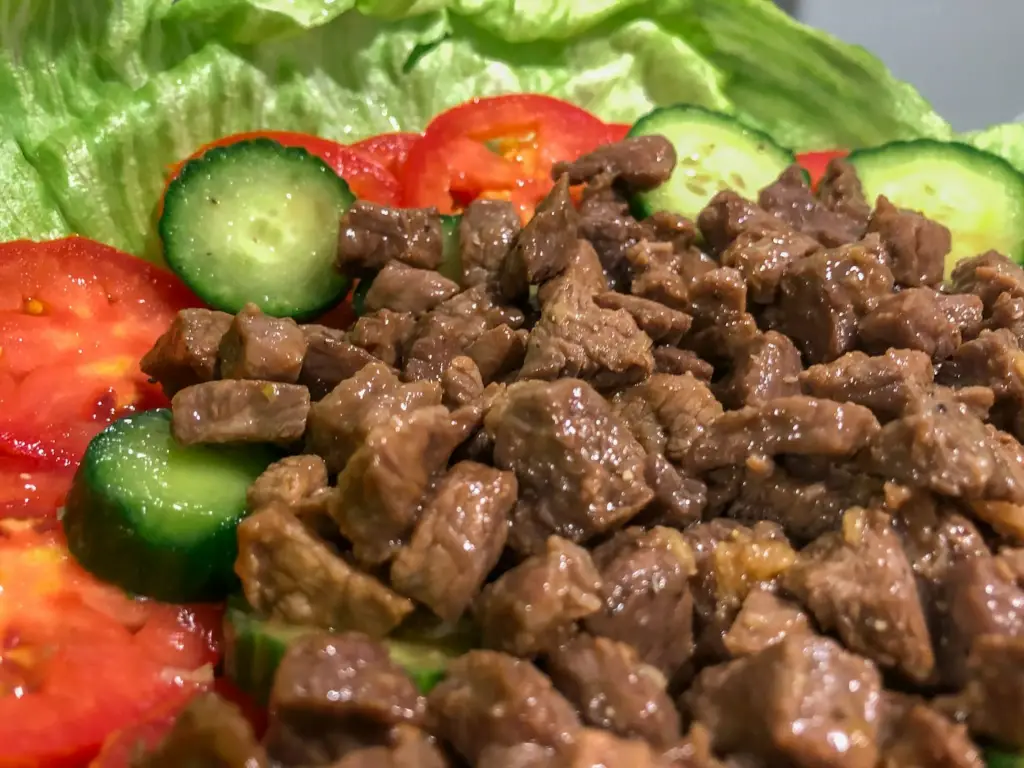
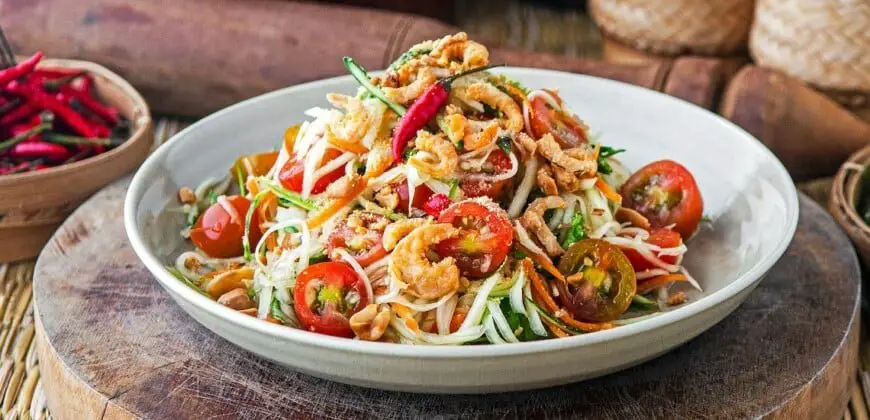
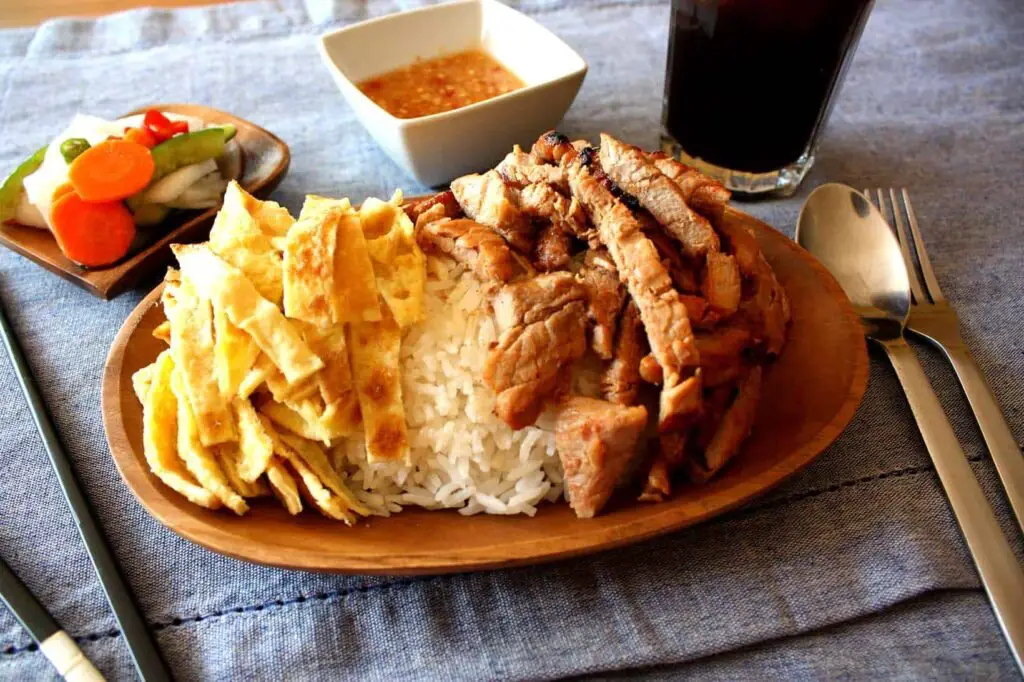
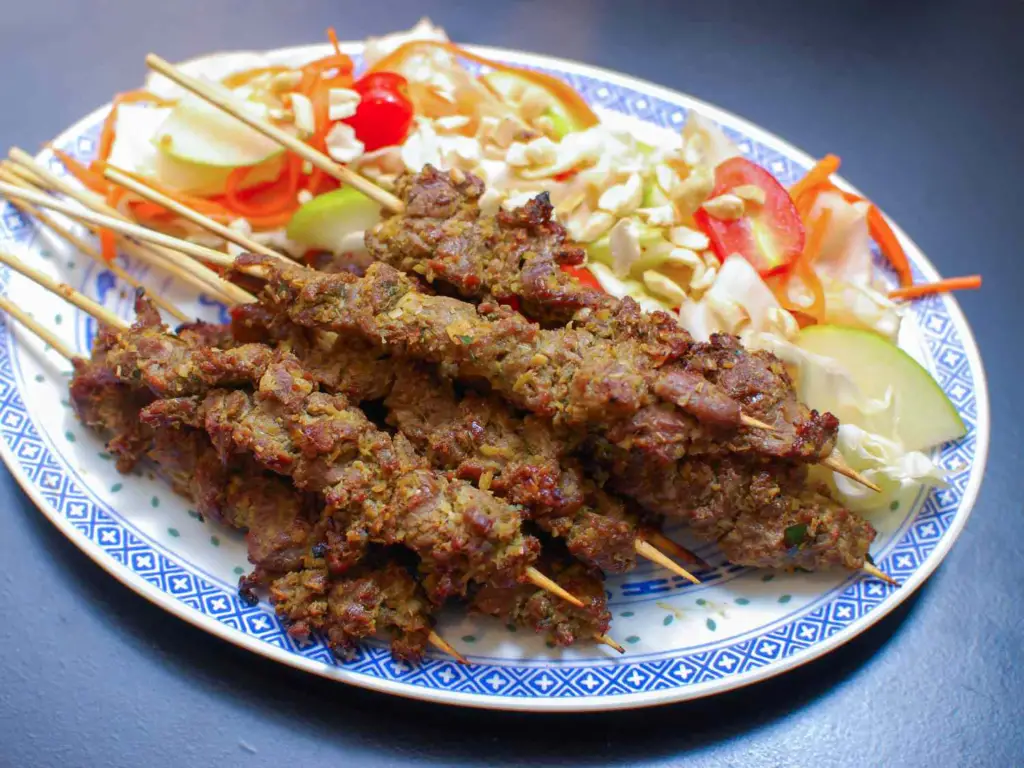

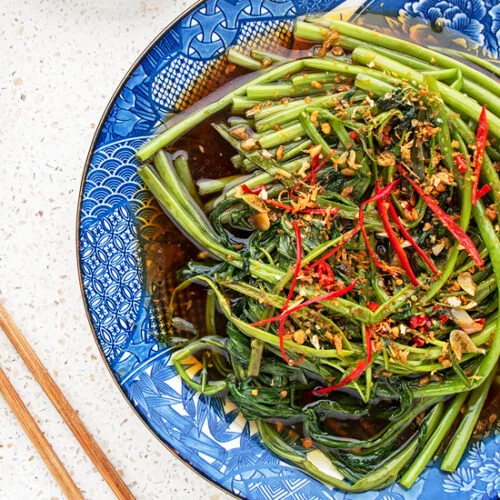
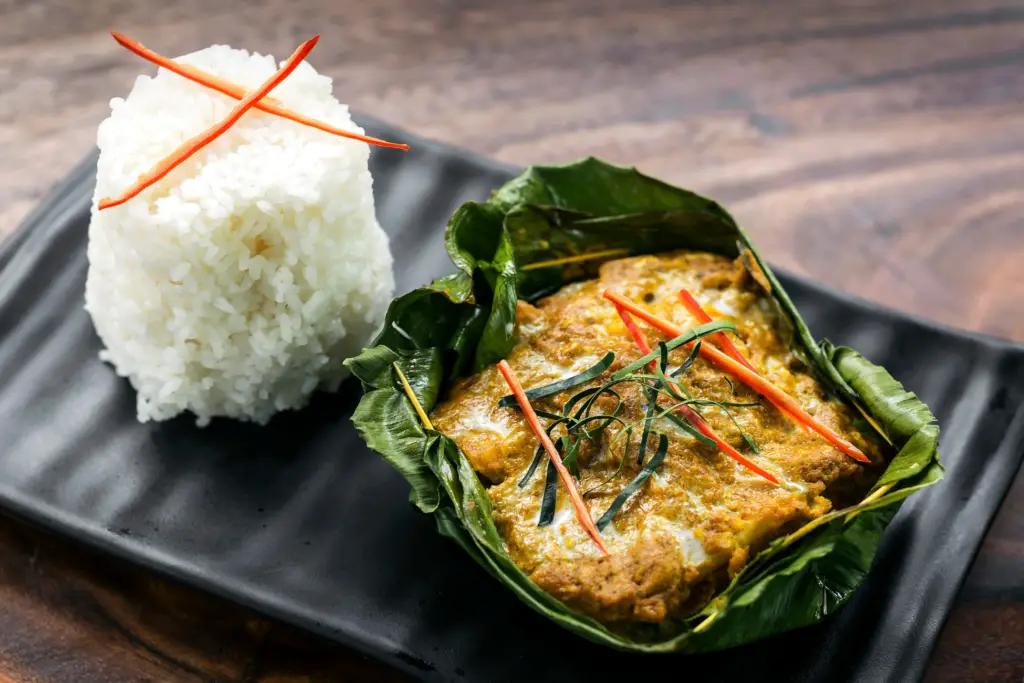

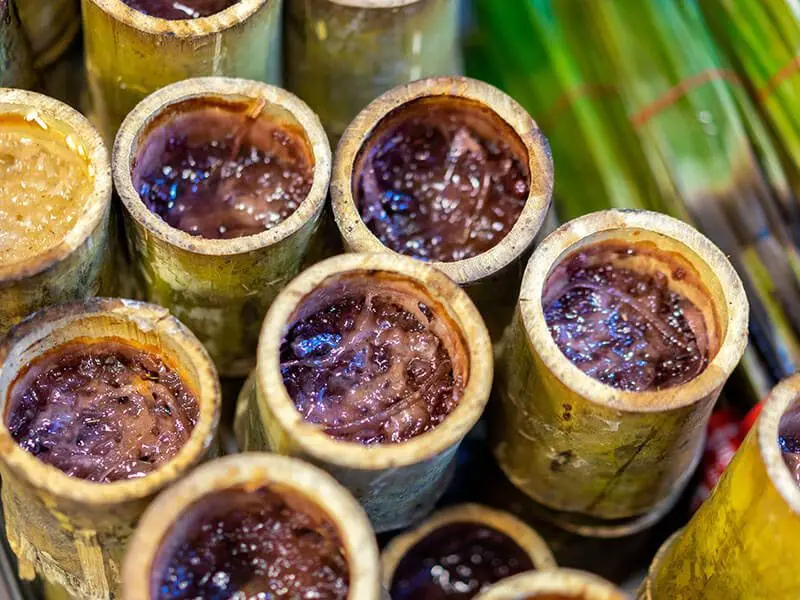

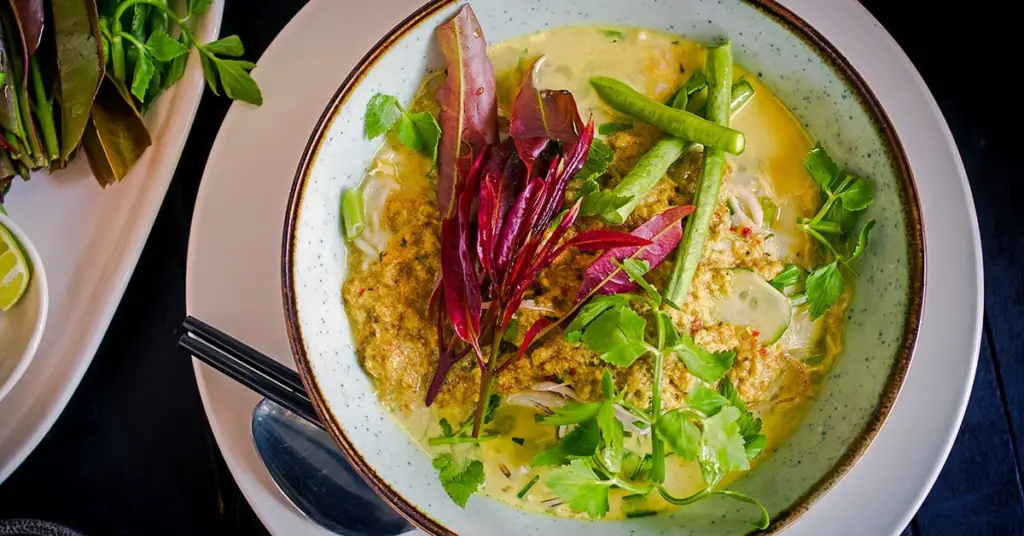
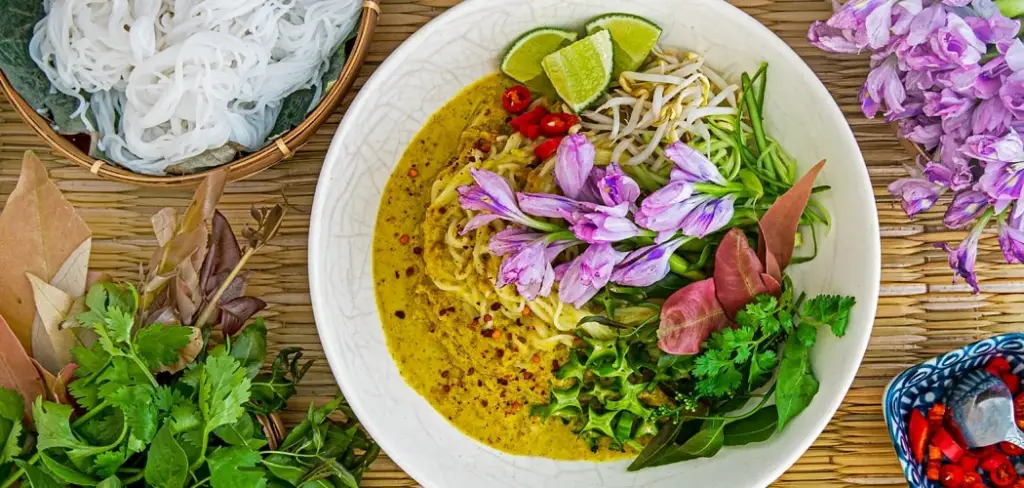
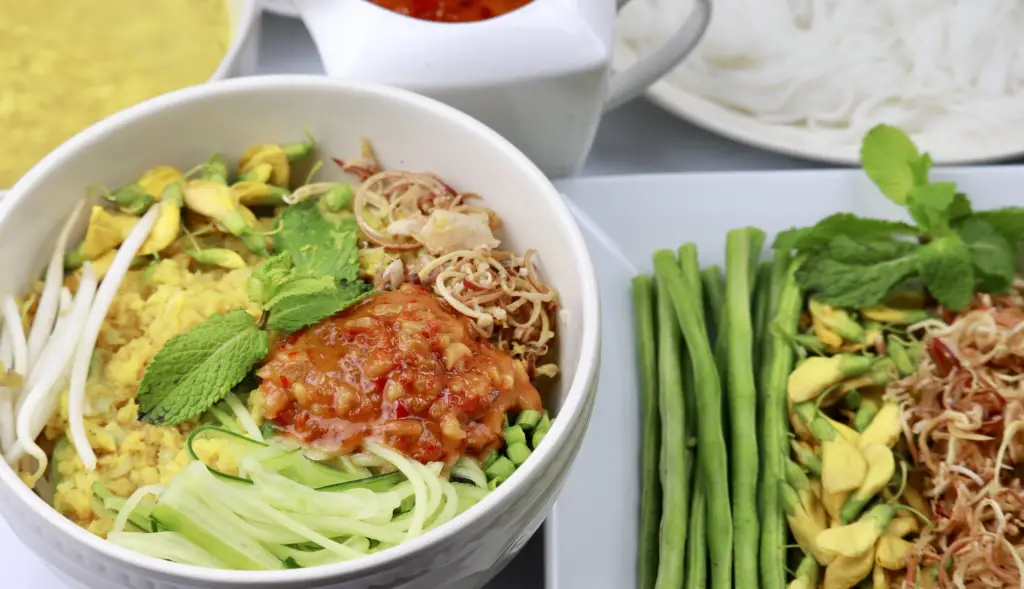
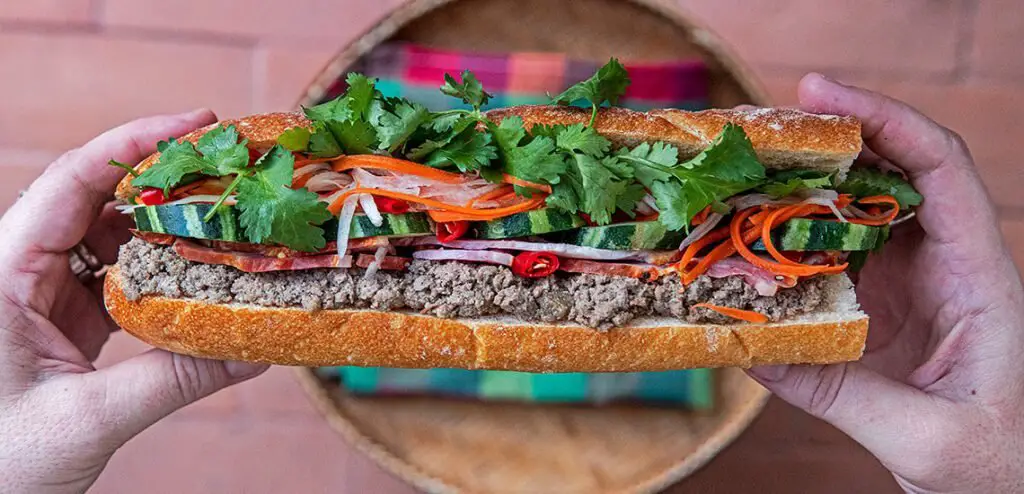
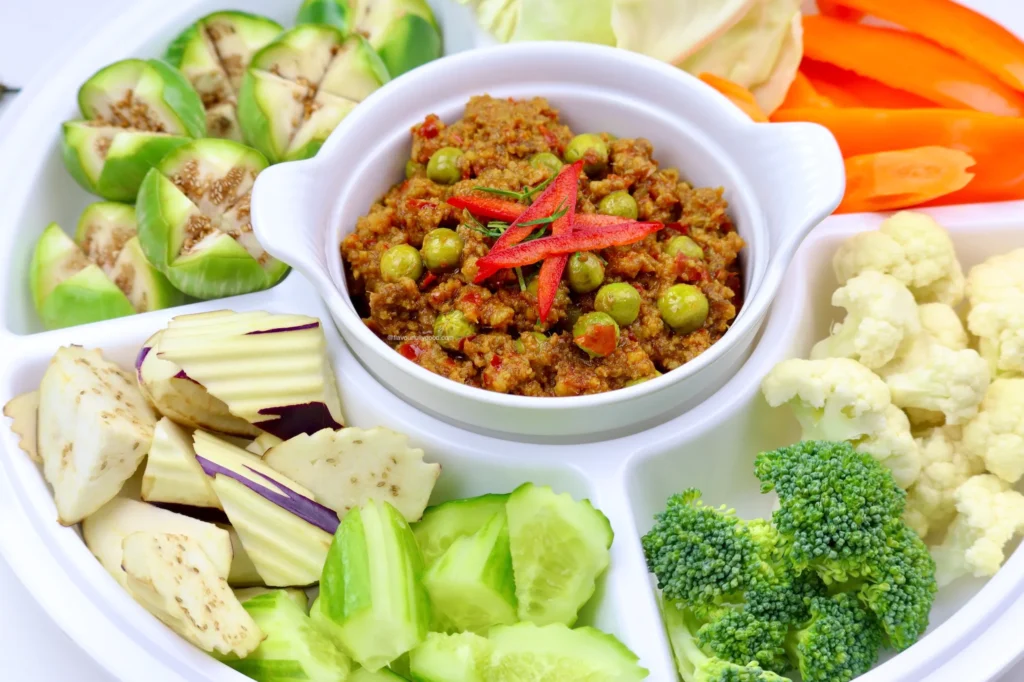
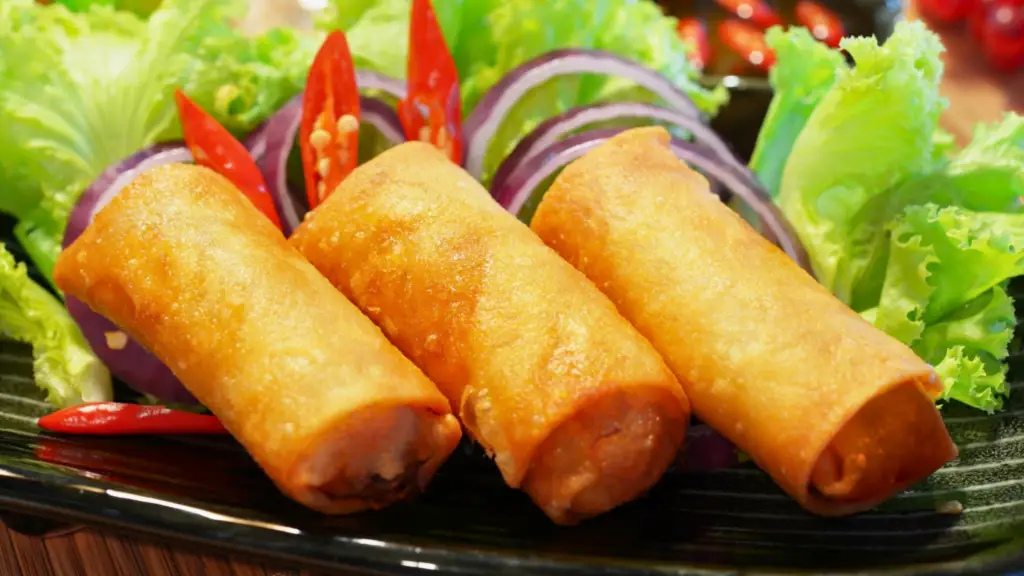
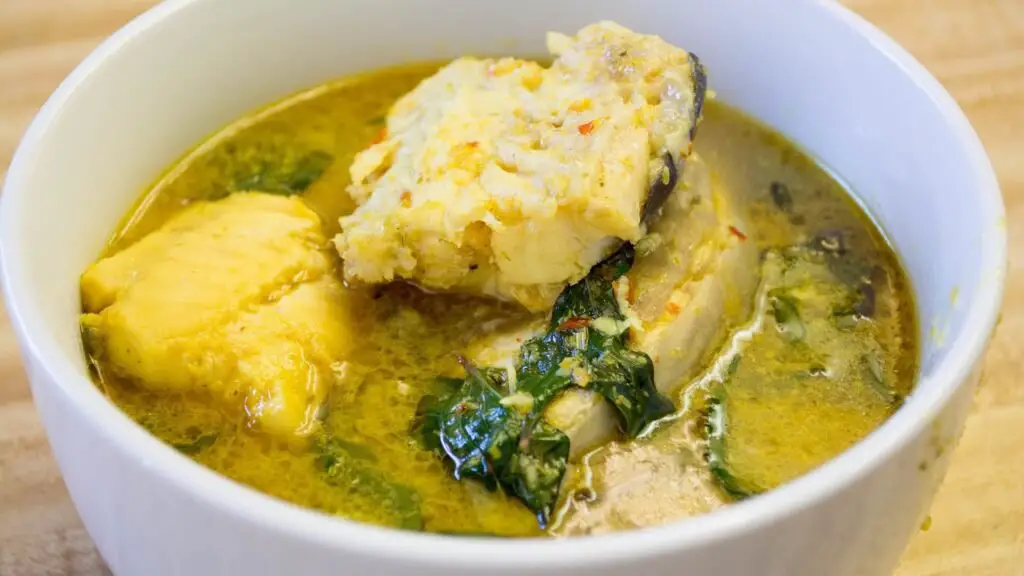
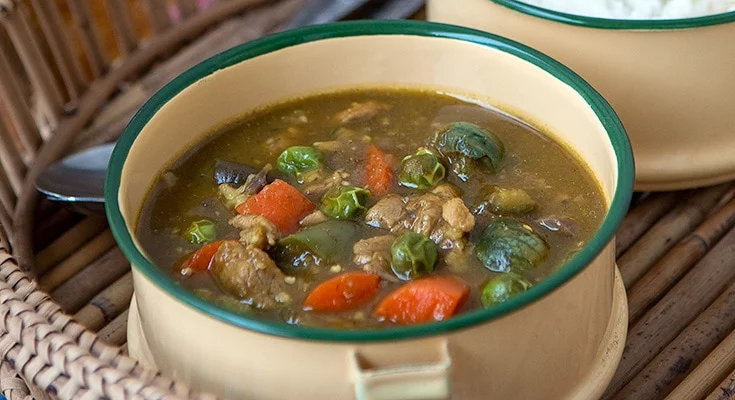

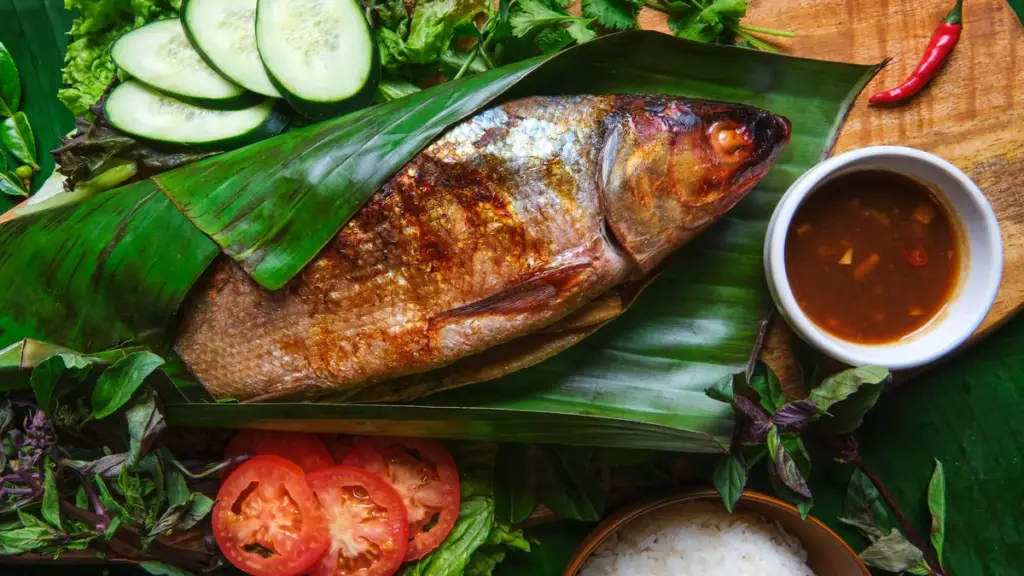
10 Fascinating Facts about Cambodia
Land of Smiles and Chopsticks

In Cambodia, it’s considered impolite to point with your index finger. Instead, locals use their whole hand or, more commonly, a gesture with their chin.
Royal White Elephant

Cambodia reveres the white elephant, a symbol of royal power and good fortune. The country even has a dedicated conservation program to protect these majestic creatures.
Ghost Marriage Ban
Believe it or not, Cambodia banned ghost marriages in 2014. This traditional practice involved marrying off a living person to a deceased partner’s spirit to ensure the deceased’s soul found peace.
Traffic Law Quirk

In Cambodia, it’s illegal to transport goods exceeding the width of your vehicle. This law aims to reduce traffic congestion caused by oversized loads on the country’s narrow roads.
No Flip-Flops Allowed
When visiting Cambodia’s Royal Palace and other religious sites, be sure to leave your flip-flops at home. It’s considered disrespectful to wear them in these sacred spaces.
The Mysterious Stone Orbs

Deep in the forests of Cambodia lie mysterious stone orbs known as “Kuy Teav,” which are believed to have been carved by ancient civilizations for unknown purposes. Some say they hold mystical powers!
Spider Delicacy
For the adventurous foodies out there, Cambodia offers a unique culinary treat: fried tarantulas! These crunchy arachnids are a popular street food snack, believed to be rich in protein.
Traditional Tattoo Taboo
While tattoos are increasingly popular among Cambodian youth, traditional Khmer culture views tattooing as taboo. In rural areas, tattoos are often associated with criminals and the underworld.
Spirit Houses
Cambodian households often have small spirit houses outside their homes, where offerings are placed to appease spirits and bring good luck. It’s believed that neglecting these spirits can lead to misfortune.
These fascinating and quirky facts showcase the rich tapestry of culture, tradition, and superstition that makes Cambodia truly unique. Whether you’re exploring ancient temples or sampling street food delicacies, there’s always something surprising to discover in the Kingdom of Wonder.
Cambodia’s History and the Effect It Has Had on the Cuisine

Cambodia’s cuisine is a fascinating story waiting to be savored. Each bite whispers tales of ancient empires, foreign influences, and a deep connection to the land. Let’s embark on a delicious adventure through time, exploring how history has shaped Cambodia’s unique flavors!
1. The Spice Route (1st century – 802 AD):
The Funan and Chenla Kingdoms laid the groundwork for Cambodian cuisine. Imagine bustling ports where traders from India exchanged spices like cardamom, cloves, and turmeric for local treasures. These fragrant additions became the foundation of the flavors we know and love today.
2. Angkor’s Golden Age (802 – 1431 AD):
Fast forward to the awe-inspiring Khmer Empire. The grand temples of Angkor symbolize a flourishing era of art, architecture, and – you guessed it – cuisine! Advanced irrigation systems allowed for extensive rice cultivation, the lifeblood of Cambodian food.
Royal kitchens experimented with complex flavors, incorporating lemongrass, galangal, and kaffir lime leaves to create dishes fit for royalty.
3. Enduring Traditions (1431 – 1863 AD):
Following Angkor’s decline, Cambodia faced challenges, but its cuisine persevered. Freshwater fish, the ubiquitous prahok (fermented fish paste), and tropical fruits remained staples.
This period also saw a subtle influence from Chinese and Vietnamese neighbors, adding another layer to the culinary tapestry.
4. A Touch of France (1863 – 1953):
French colonization introduced new ingredients and techniques.
Imagine fluffy baguettes alongside fragrant Cambodian curries! Coffee and pastries became popular, and the iconic “amok” dish, a steamed fish curry with French influences, found its place on Cambodian tables.
5. A Nation Rediscovered (1953 – Present):

Cambodian independence brought a renewed focus on its rich cultural heritage. King Sihanouk championed a revival of Khmer cuisine, leading to a rediscovery of traditional recipes.
Sadly, political turmoil and war (1970-1975) caused hardship and food scarcity, with many culinary traditions temporarily lost.
The Legacy: A Fusion for the Ages
Today, Cambodian cuisine is a vibrant blend of ancient traditions, foreign influences, and a deep respect for local ingredients. Every dish tells a story, waiting to be savored by adventurous foodies like you!
References
- Britannica: History of Cambodia
- Wikipedia: History of Cambodia
- Wikipedia: Timeline of Cambodian history
How the Cambodian Climate and Geography has Influenced the Cuisine

Cambodia’s cuisine isn’t just delicious, it’s a captivating story etched on a plate. Let’s explore how the country’s unique geography, climate, and regional variations have shaped its vibrant flavors.
A Land Shaped by Water:
Imagine vast, fertile plains stretching towards the mighty Mekong River, its rich sediment nourishing the land during the rainy season. This is Cambodia’s heartland, where the Tonle Sap, Southeast Asia’s largest freshwater lake, plays a starring role.
During the rainy season, the Mekong reverses its flow, transforming the Tonle Sap into a life-giving source of fish that feeds millions.
Mountains and More:

But Cambodia isn’t all flat plains. Rugged mountain ranges like the Cardamoms and the Dangreks rise in the southwest, south, and north, adding a touch of wild beauty and diverse ecosystems.
These areas boast thicker forests, perfect for cultivating unique ingredients.
A Dance with the Seasons:
Cambodia’s climate is a tropical tango of hot and humid. The dry season (November to May) brings sunshine, while the rainy season (June to October) nourishes the land.
This cycle dictates what grows and when, influencing traditional dishes and cooking methods.
A Symphony of Flavors:
The result? A symphony of flavors that celebrates fresh ingredients. Freshwater fish, a gift from the Tonle Sap, takes center stage in curries and soups.
Tropical fruits like mango and pineapple explode with sweetness, while fragrant herbs add a touch of earthiness.
A Culinary Journey Through the Regions:
Cambodia’s culinary scene isn’t a monolith. Each region boasts its own specialties:
- Phnom Penh (Central): Indulge in the extravagant “kuy teav,” a pork broth-based rice noodle soup adorned with everything from pork blood to Mekong River prawns.
- Ta Khmau (Kandal Province): Craving a unique breakfast? Try “kuy teav kat,” fresh flat rice noodles served with minced pork, vegetables, and a delightful dipping sauce.
- Banteay Srei (Siem Reap): Start your day with “nom banh chok,” a rice noodle dish in a fragrant fish broth or creamy chicken curry. Variations include sweet, dried shrimp in Kampot and a touch more garlic and coconut milk in Siem Reap.
- Kratie: Don’t miss the savory snack of sticky bamboo rice cones sold by street vendors across the country, especially popular in Kratie.
A Culinary Adventure Awaits
Cambodia’s cuisine is a testament to the deep connection between its people, their land, and their history. Every bite is an invitation to explore a vibrant culture, so grab your chopsticks and embark on a delicious adventure!
References
- Country Reports: Cambodia Geography
- National Geographic: Culinary Guide to Cambodia
- Culture Trip: A Regional Guide to Cambodian Cuisine
Understanding the Essence of Cambodian Cuisine

Cambodian cuisine is a captivating fusion of tradition, innovation, and local ingredients, making it a tantalizing journey for food enthusiasts around the globe. But what sets Cambodian cuisine apart from its neighbors, and what makes it so uniquely delicious?
Let’s delve into the essence of Cambodian cuisine and uncover the secrets that make it truly special.
The Blend of Cultural Influences
Cambodian cuisine is a melting pot of cultural influences, reflecting centuries of trade, migration, and colonialism. From Indian spices to Chinese noodles, Thai curries to French baguettes, Cambodian dishes incorporate a diverse range of flavors and ingredients.
This cultural fusion creates a culinary landscape that is both familiar and exotic, offering a delightful adventure for the taste buds.
Embrace of Fresh and Local Ingredients
At the heart of Cambodian cuisine is a deep reverence for fresh, seasonal, and locally sourced ingredients. With abundant rice paddies, freshwater rivers, and lush tropical forests, Cambodia boasts a rich bounty of produce, seafood, and aromatic herbs.
From fragrant lemongrass and kaffir lime leaves to plump river prawns and juicy tropical fruits, Cambodian dishes celebrate the vibrant flavors of the land.
Balancing Sweet, Sour, Salty, and Spice
Cambodian cuisine is known for its harmonious balance of sweet, sour, salty, and spicy flavors. This delicate balance is achieved through a careful combination of ingredients such as palm sugar, tamarind, fish sauce, and fresh chilies.
From the tangy notes of “samlor kor ko” (sour soup) to the fiery kick of “prahok ktiss” (spicy pork dip), Cambodian dishes tantalize the taste buds with a symphony of flavors.
The Art of Cooking Techniques
Cambodian cuisine is characterized by its simple yet skillful cooking techniques, which bring out the natural flavors of the ingredients. Grilling, steaming, stir-frying, and braising are common methods used to prepare Cambodian dishes, resulting in dishes that are light, flavorful, and packed with nutrients.
Whether it’s the smoky aroma of “char kroeung sach ko” (lemongrass beef skewers) or the delicate texture of “amok trey” (steamed fish curry), Cambodian cooking techniques elevate the dining experience to new heights.
A Reflection of Khmer Heritage
Above all, Cambodian cuisine is a reflection of the country’s rich Khmer heritage and cultural identity. From the majestic temples of Angkor to the bustling markets of Phnom Penh, Cambodian cuisine is deeply intertwined with the fabric of everyday life. It’s not just about the food;
it’s about the stories, traditions, and memories that are passed down through generations, creating a culinary legacy that is both timeless and cherished.
In essence, Cambodian cuisine is a celebration of life, love, and the simple joys of sharing a delicious meal with family and friends. It’s a journey of discovery, where every bite tells a story and every flavor evokes a memory. So come, immerse yourself in the enchanting world of Cambodian cuisine, and let your taste buds embark on an unforgettable adventure.
Exploring Cambodia’s Ingredients: The Flavors of Cambodian Cuisine
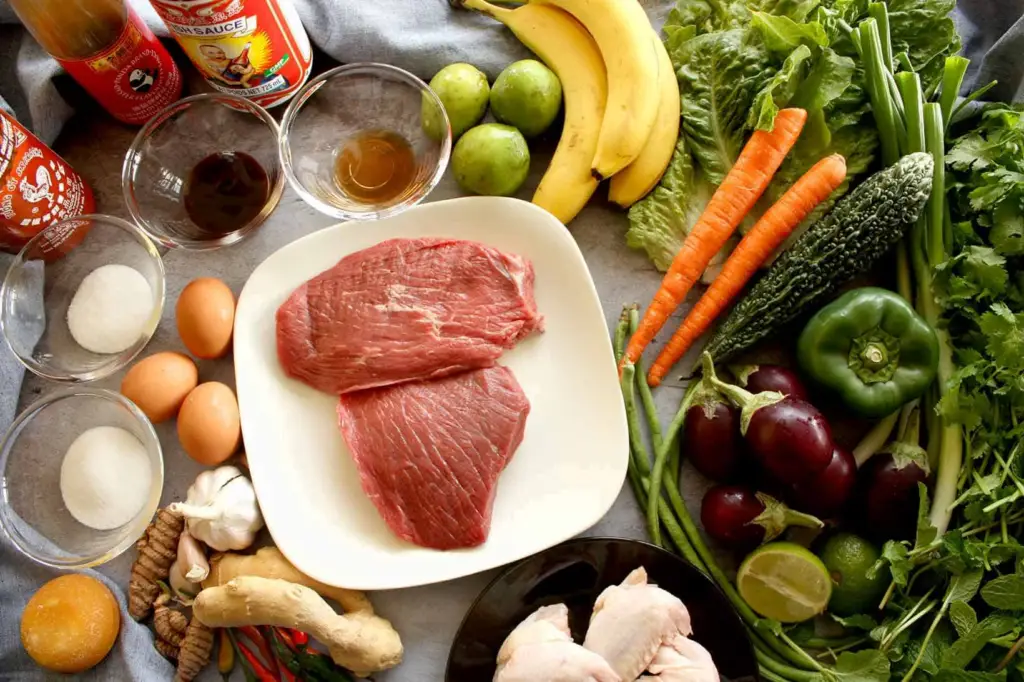
From fragrant herbs to succulent seafood, Cambodian cuisine celebrates the bounty of the land and the richness of its cultural heritage. Let’s dive into the main ingredients that form the backbone of Cambodian cooking, unlocking the secrets to its tantalizing flavors and aromatic delights.
1. Rice: The Heartbeat of Cambodian Cuisine
- Staple Grain: Rice is the cornerstone of Cambodian cuisine, gracing the table at nearly every meal in various forms, including steamed rice, rice noodles, and rice flour for desserts.
- Cultural Symbol: Rice holds deep cultural significance in Cambodia, symbolizing prosperity, abundance, and the cycle of life. It is cultivated in lush paddies across the country and forms the foundation of many traditional dishes.
2. Fresh Herbs and Aromatics
- Lemongrass: Known for its citrusy aroma and subtle flavor, lemongrass adds a refreshing zest to Cambodian dishes, such as soups, curries, and marinades.
- Kaffir Lime Leaves: These fragrant leaves lend a distinctive citrusy flavor to Cambodian cuisine, enhancing the aroma and depth of dishes like “amok trey” (steamed fish curry) and “samlor kor ko” (sour soup).
- Galangal: Similar to ginger but with a more peppery and pungent flavor, galangal is a key ingredient in Cambodian curries, soups, and stir-fries, imparting warmth and depth to the dishes.
3. Seafood and Freshwater Delicacies
- Fish: With abundant freshwater resources, fish is a staple protein in Cambodian cuisine. From freshwater river fish to saltwater varieties, fish is often grilled, steamed, or simmered in fragrant curries.
- Prahok: A uniquely Cambodian ingredient, prahok is a fermented fish paste that adds a savory umami depth to dishes like “prahok ktiss” (spicy pork dip) and “samlor kako” (fish soup).
4. Tropical Fruits and Vegetables
- Mangoes: Sweet and juicy mangoes are a beloved fruit in Cambodia, enjoyed fresh as a snack or incorporated into salads, desserts, and sauces.
- Bananas: Whether eaten ripe or cooked, bananas are a versatile ingredient in Cambodian cuisine, used in desserts, smoothies, and savory dishes like “trey chien chou” (fried banana fritters).
5. Fragrant Spices and Seasonings
- Palm Sugar: Made from the sap of palm trees, palm sugar adds a natural sweetness and caramel-like flavor to Cambodian desserts and savory dishes alike.
- Fish Sauce: A ubiquitous condiment in Cambodian kitchens, fish sauce adds depth and saltiness to marinades, dipping sauces, and stir-fries, balancing out flavors with its umami richness.
6. Coconut: The Creamy Indulgence
- Coconut Milk: Creamy and luscious, coconut milk is a luxurious addition to Cambodian curries, soups, and desserts, imparting a rich and velvety texture to dishes like “samlor kako” (coconut fish soup) and “num sang kcheay” (coconut rice pudding).
From the fertile rice paddies to the bustling markets, Cambodian cuisine celebrates the vibrant flavors and aromatic delights of its land and people. With its emphasis on fresh ingredients, bold flavors, and cultural traditions, Cambodian cuisine offers a tantalizing journey for the senses, inviting you to savor every bite and experience the essence of Cambodia’s culinary heritage.
Cambodian ’s National Food

As Cambodia’s national dish, Fish Amok encapsulates the essence of Khmer flavors and cultural heritage, offering a tantalizing journey for the taste buds. Join us as we unravel the secrets behind this beloved delicacy, from its rich history to its aromatic ingredients and delicate preparation.
A Culinary Masterpiece
Fish Amok is more than just a dish; it’s a culinary masterpiece that embodies the complexity and depth of Cambodian cuisine.
This creamy fish curry is traditionally steamed in banana leaves, infusing it with a subtle aroma and tender texture that is as visually stunning as it is delicious to eat.
The Ingredients of Fish Amok
At the heart of Fish Amok lies a harmonious blend of fresh seafood, fragrant herbs, and aromatic spices. The key ingredients include:
- Fish: Traditionally, firm white fish such as tilapia or catfish is used for Fish Amok, though other varieties like snapper or cod can also be used.
- Coconut Milk: Creamy coconut milk forms the base of the curry, imparting richness and sweetness to the dish.
- Kroeung Paste: This aromatic paste is made from a blend of lemongrass, galangal, turmeric, garlic, and other herbs and spices, lending depth and complexity to the curry.
- Kaffir Lime Leaves: These fragrant leaves add a citrusy aroma and subtle flavor to the curry, enhancing its overall freshness.
- Palm Sugar and Fish Sauce: These essential condiments provide a perfect balance of sweetness and saltiness, elevating the flavors of the curry.
The Preparation of Fish Amok
Preparing Fish Amok is a labor of love that requires patience, precision, and skill. The fish is first marinated in a mixture of kroeung paste, coconut milk, and seasonings, allowing the flavors to meld and infuse.
The banana leaves are then carefully folded into cups or parcels, creating a vessel for steaming the curry. Once steamed to perfection, Fish Amok emerges from its banana leaf cocoon, ready to delight diners with its creamy texture and aromatic aroma.
A Symbol of Cambodian Identity
Fish Amok is more than just a dish; it’s a symbol of Cambodian identity and pride. Its vibrant colors, bold flavors, and intricate preparation reflect the rich cultural heritage and culinary traditions of the Khmer people.
Whether enjoyed at a bustling street food stall or a fine dining restaurant, Fish Amok invites diners to experience the soul of Cambodia’s culinary legacy.
Exploring Cambodian Street Food
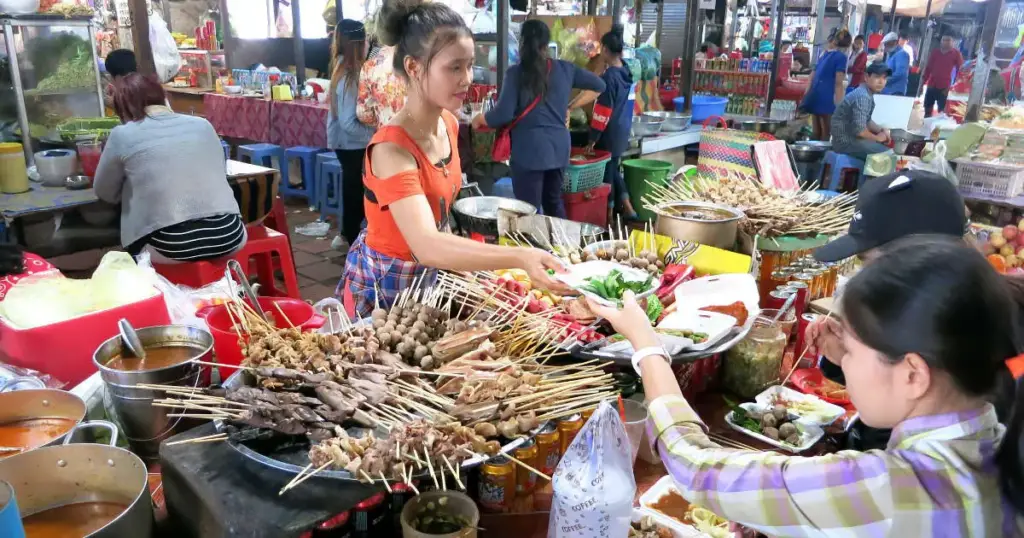
Cambodia’s streets aren’t just bustling with tuk-tuks and friendly faces; they’re a vibrant tapestry of flavors waiting to be explored. Street food is the beating heart of Cambodian cuisine, offering a delicious and affordable way to immerse yourself in the local culture.
From sizzling skewers to fragrant curries, every bite is an adventure for your taste buds.
Five Must-Try Street Food Delights
Num Banh Chok (Rice Noodle Salad)
This breakfast staple features thin rice noodles in a fragrant fish broth or creamy coconut curry. Variations abound across regions, with some adding sweet, dried shrimp (Kampot) or extra garlic and coconut milk (Siem Reap). Top it with fresh herbs and a squeeze of lime for a refreshing start to your day.
Kuy Teav (Rice Noodle Soup)
This versatile dish can be enjoyed any time of day. Choose from a variety of broths, like pork or chicken, with toppings ranging from tender slices of meat to vibrant vegetables and fried shallots.
Phnom Penh offers a particularly extravagant version with offal and Mekong River prawns, while Ta Khmau boasts “kuy teav kat” – fresh flat rice noodles served with a symphony of flavors including minced pork, vegetables, and a delightful dipping sauce.
Nom Bahn Chum (Cha Ca)
This dish, inspired by Vietnamese cuisine, features skewers of marinated pork or fish grilled to perfection over charcoal.
Served with rice vermicelli, fresh herbs, and a tangy dipping sauce, it’s a delightful explosion of textures and tastes.
Sach Ko Ang (Deep-Fried Spring Rolls)
These golden parcels of goodness are filled with a savory mixture of pork, vegetables, and sometimes glass noodles. Enjoy them piping hot with a sweet chili dipping sauce for a satisfying and affordable snack.
Chet Chien (Fried Banana Fritters)
Craving something sweet? Look no further than these crispy banana fritters, a popular dessert option across Cambodia. Ripe bananas are coated in a light batter and deep-fried until golden brown, then drizzled with condensed milk or palm sugar for an irresistible sweet treat.
Cities Ablaze with Street Food
Cambodia’s street food scene thrives in all corners of the country, but some cities reign supreme:
- Phnom Penh: The capital boasts a dizzying array of street food vendors, offering everything from classic dishes to regional specialties. Don’t miss the night markets for a truly immersive experience.
- Siem Reap: While famed for Angkor Wat, Siem Reap also offers a vibrant street food scene. Explore the streets around Pub Street for a delicious and affordable culinary adventure.
- Sihanoukville: This popular beach town is a haven for seafood lovers. Indulge in fresh catches grilled to perfection by the beach vendors, or sample the local street food favorites alongside a refreshing coconut drink.
Beyond the Plate
The beauty of Cambodian street food extends beyond the flavors. It’s a window into the heart of Cambodian culture. Witness the skill of vendors cooking over charcoal fires, the vibrant colors of fresh ingredients, and the friendly smiles as you savor each bite.
So, grab a seat on a plastic stool, embrace the energy of the street, and embark on a delicious journey through Cambodia’s culinary landscape.
The Most Popular Cambodian Recipes
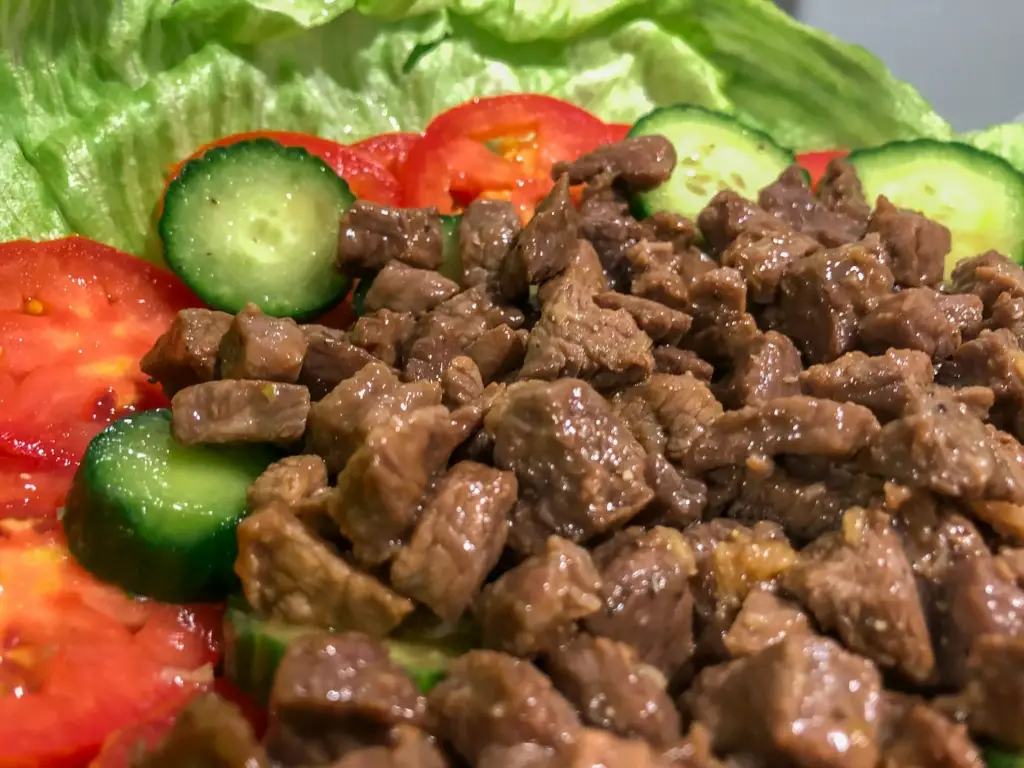
From aromatic curries to refreshing salads, each dish offers a delightful journey for the taste buds, bringing together fresh ingredients and bold spices in perfect harmony.
1. Fish Amok (Amok Trey)
Fish Amok is Cambodia’s national dish, a creamy and fragrant fish curry steamed in banana leaves. This iconic dish features tender fish fillets bathed in a luscious coconut milk sauce infused with lemongrass, galangal, and kaffir lime leaves, creating a symphony of flavors that is both comforting and indulgent.
2. Beef Lok Lak
Beef Lok Lak is a beloved Cambodian stir-fry dish featuring tender strips of beef marinated in a flavorful sauce of soy, oyster, and hoisin sauce, then quickly stir-fried with onions, tomatoes, and lettuce. Served with a side of rice and a tangy lime dipping sauce, this dish is a true crowd-pleaser.
3. Nom Banh Chok:
Nom Banh Chok is a traditional Cambodian breakfast dish consisting of rice noodles topped with a savory fish-based gravy made from lemongrass, turmeric, and kaffir lime leaves.
Served with an array of fresh herbs, bean sprouts, and sliced cucumbers, Nom Banh Chok is a refreshing and satisfying way to start the day.
4. Chicken Samlor Kako
Chicken Samlor Kako is a hearty Cambodian soup made with tender chicken, potatoes, carrots, and cabbage simmered in a fragrant broth flavored with lemongrass, galangal, and tamarind. This comforting soup is often served with a side of rice for a wholesome and nourishing meal.
5. Cambodian Beef Skewers (Char Kroeung Sach Ko)
Char Kroeung Sach Ko features succulent beef skewers marinated in a flavorful paste of lemongrass, garlic, shallots, and turmeric, then grilled to perfection.
Served with a side of tangy dipping sauce made from lime juice, fish sauce, and chili, these skewers are a popular street food snack in Cambodia.
6. Grilled Fish (Trey Ang)
Trey Ang is a simple yet delicious Cambodian dish featuring whole fish marinated in a mixture of garlic, lemongrass, and fish sauce, then grilled over an open flame until golden and crispy. Served with a side of sweet and tangy dipping sauce, this dish is a favorite among seafood lovers.
7. Cambodian Green Mango Salad (Bok Lahong):
Bok Lahong is a refreshing Cambodian salad made with crisp green mangoes, shredded carrots, and peanuts tossed in a zesty dressing of lime juice, fish sauce, and chili. This vibrant salad offers a perfect balance of flavors and textures, making it an ideal accompaniment to any meal.
8. Cambodian Beef Soup (Samlor Machu Trey)
Samlor Machu Trey is a comforting Cambodian soup made with tender chunks of fish simmered in a fragrant broth flavored with tamarind, lemongrass, and turmeric. This hearty soup is often garnished with fresh herbs and served with a side of rice for a satisfying meal.
9. Stir-Fried Vegetables (Chha Trokuon):
Chha Trokuon is a simple yet flavorful Cambodian stir-fry dish featuring a colorful medley of seasonal vegetables such as bell peppers, eggplant, and green beans sautéed with garlic, ginger, and soy sauce. This versatile dish can be served as a side or enjoyed as a main course with rice.
10. Coconut Rice Pudding (Num Sang Kcheay):
Num Sang Kcheay is a delightful Cambodian dessert made with sticky rice cooked in sweetened coconut milk and flavored with pandan leaves. Served warm or chilled, this creamy rice pudding is often topped with fresh fruit or toasted sesame seeds for added texture and flavor.
Indulge in the flavors of Cambodia with these 10 popular recipes that showcase the country’s rich culinary heritage and vibrant ingredients. Whether you’re craving a comforting curry or a refreshing salad, these dishes are sure to satisfy your appetite and transport you to the bustling markets and vibrant streets of Cambodia.
How Healthy is Cambodian Food

Cambodia boasts a rich and vibrant cuisine, deeply influenced by its history, geography, and cultural practices. But how does this traditional diet translate to the health of the Cambodian population? Let’s delve into the delicious world of Cambodian food while exploring its impact on well-being.
The Pillars of the Cambodian Plate:
- Mighty Rice: Rice reigns supreme, providing a hearty base for most meals and contributing 70-80% of daily calorie intake. This staple offers essential carbohydrates, keeping Cambodians energized throughout the day.
- Seafood Symphony: Cambodia’s abundant waterways are a treasure trove of fish and other seafood. These protein powerhouses are a regular feature on Cambodian tables, providing essential nutrients for a healthy life.
- Tropical Bounty: The country’s tropical climate allows for a dazzling array of fruits, bursting with vitamins, minerals, and natural sugars. From juicy mangoes to refreshing pineapples, these fruits add a touch of sweetness and essential nutrients to the diet.
- Veggie Variety: Vegetables are woven into Cambodian meals, adding essential vitamins, fiber, and a splash of color to plates. This focus on plants contributes to overall health and well-being.
Challenges and Solutions:
Despite the strengths of the Cambodian diet, there are areas for improvement:
- Smoking Concerns: Smoking rates are high among Cambodians, both in Cambodia and abroad. This habit significantly contributes to health risks like heart disease and cancer [2]. Encouraging smoking cessation programs is crucial for a healthier future.
- Dietary Balance: While traditional Cambodian meals offer many benefits, a focus on variety and portion control is essential. Promoting a balanced diet that incorporates all food groups can help combat health issues.
National Health Snapshot:
Looking at the Cambodian population’s health, we see a complex picture:
- Leading Causes of Concern: Cardiovascular diseases (CVD) are the top killers in Cambodia, while cancer takes the lead among Cambodian-Americans [2].
- Risk Factors at Play: Smoking, poor diet, and inadequate nutrition are key contributors to the high rates of CVD and various cancers [2].
- Chronic Conditions: Diabetes poses a significant threat, with prevalence rates ranging from 5% to a staggering 27% among Cambodian-Americans in different regions [2]. High cholesterol also affects a significant portion of this population [2].
- Mental Health Matters: The trauma endured during the Khmer Rouge regime has had a lasting impact on mental health, highlighting the need for accessible mental health services [2].
- Healthcare Hurdles: Both Cambodians and Cambodian-Americans face challenges in accessing quality healthcare due to inequitable distribution and socioeconomic factors [2].
Cambodia’s cuisine is a fascinating blend of tradition and taste. By acknowledging the health challenges and working towards solutions, Cambodians can continue to enjoy their delicious food culture while prioritizing a healthy future.
References
- Food-Based Dietary Guidelines for School-Aged Children in Cambodia
- Understanding Nutrition in Cambodia: An in-Depth Guide
- Cambodian and Cambodian-American Health Statistics, 1994-2021
Cambodian Cuisine Recipes to Try at Home
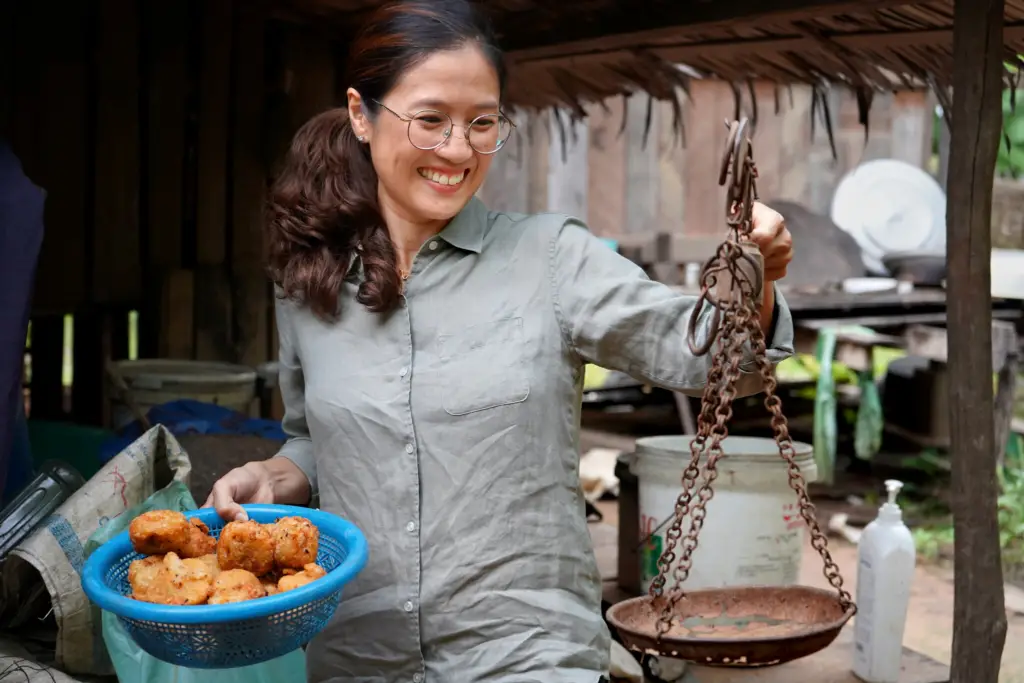
Craving an exotic adventure for your taste buds? Look no further than Cambodian cuisine! This vibrant culinary landscape, influenced by ancient traditions, French flair, and Southeast Asian neighbors, offers a symphony of flavors waiting to be explored. But why wait for a restaurant?
In this section, we’ll unlock the secrets to delicious Cambodian dishes you can recreate right in your own kitchen.
From the comforting warmth of “amok trey” (fish curry) to the refreshing zing of “loc lak” (beef with lemongrass), we’ll guide you through every step, with easy-to-follow instructions and readily available ingredients.
Get ready to:
- Master essential Cambodian cooking techniques: Learn how to prepare fragrant curry pastes, stir-fry like a pro, and unlock the secrets of achieving perfect rice every time.
- Explore a variety of flavors: We’ll cover vegetarian delights, seafood sensations, and meaty masterpieces – there’s something to tantalize every palate.
- Impress your friends and family: Become the star of your next dinner party by whipping up authentic Cambodian dishes that are sure to wow your guests.
So, grab your apron, fire up the stove, and embark on a delicious journey through Cambodian home cooking!
Cambodia Food – Kuy Teav Kat (Fresh Flat Rice Noodles)

Exploring the Culinary Heritage of Cambodia: Kuy Teav Kat
In the heart of Cambodia, amidst bustling markets and vibrant streets, lies the culinary gem known as Kuy Teav Kat. Originating from Cambodian cuisine, this dish embodies the rich history and diverse flavors of the region.
With its roots in Khmer culture, Kuy Teav Kat has evolved over centuries, influenced by neighboring countries and local traditions. Let’s delve into the story behind this beloved Cambodian dish and uncover the secrets of its tantalizing flavors.
Cambodia Food – Kuy Teav Kat – Ingredients:
- 200g flat rice noodles
- 200g pork, thinly sliced
- 4 cups pork broth
- 2 cloves garlic, minced
- 2 eggs
- 1 tablespoon fish sauce
- 1 tablespoon soy sauce
- 1 tablespoon oyster sauce
- 1 teaspoon sugar
- 1/2 teaspoon black pepper
- 2 green onions, chopped
- Bean sprouts, for garnish
- Fresh herbs (cilantro, basil, mint), for garnish
- Lime wedges, for serving
- Chili flakes or fresh chilies, optional for spice lovers
Cambodia Food – Kuy Teav Kat – Recipe:
Preparing the Ingredients:
- Slice the pork thinly and mince the garlic.
- Chop the green onions and prepare the bean sprouts, fresh herbs, and lime wedges for garnish.
Cooking the Pork Broth:
- In a large pot, bring 4 cups of water to a boil.
- Add the pork slices to the boiling water and let them cook for 5-7 minutes until they are fully cooked.
- Remove the pork slices from the pot and set them aside.
- In the same pot, add the minced garlic and sauté until fragrant.
- Pour in the pork broth and bring it to a simmer.
Preparing the Seasonings:
- In a small bowl, whisk together the fish sauce, soy sauce, oyster sauce, sugar, and black pepper.
- Pour the seasoning mixture into the simmering broth and stir well to combine.
Cooking the Noodles and Eggs:
- In a separate pot, cook the flat rice noodles according to the package instructions.
- While the noodles are cooking, crack the eggs into the simmering broth and stir gently to create egg ribbons.
Assembling the Dish:
- Once the noodles are cooked, drain them and divide them into serving bowls.
- Ladle the hot broth over the noodles, making sure to distribute the pork slices and egg ribbons evenly.
- Garnish the Kuy Teav Kat with chopped green onions, bean sprouts, and fresh herbs.
- Serve immediately with lime wedges and chili flakes or fresh chilies on the side for those who enjoy extra spice.
Serving Size: This recipe serves 2-3 people.
Estimated Cooking Time: Approximately 30 minutes.
Nutritional Information:
- Calories: 320 kcal
- Carbohydrates: 45g
- Protein: 15g
- Fat: 8g
- Fiber: 3g
Enjoy the soul-warming goodness of Kuy Teav Kat, a dish that captures the essence of Cambodian cuisine with every slurp of its fragrant broth and tender rice noodles. Perfect for a cozy night in or a hearty meal with loved ones.
Cambodia Food – Nom Bahn Chum (Cha Ca)

Discovering Cambodian Cuisine: Nom Bahn Chok (Cha Ca)
Cambodian cuisine is a treasure trove of flavors, and Nom Bahn Chum, also known as Cha Ca, is a dish that perfectly encapsulates the essence of Cambodian cooking. This traditional dish originates from the bustling streets of Cambodia and has been passed down through generations, cherished for its vibrant taste and cultural significance.
History and Background
Nom Bahn Chum, or Cha Ca, is a popular Cambodian dish that originated in the heart of Cambodia’s vibrant street food scene. This flavorful dish features tender fish marinated in aromatic spices, served atop a bed of fresh herbs, vegetables, and rice noodles. With influences from both Cambodian and Vietnamese cuisines, Nom Bahn Chum has become a beloved staple in Cambodian culinary traditions.
Cambodia Food – Nom Bahn Chum (Cha Ca) Ingredients
For the Fish Marinade:
- 1 pound firm white fish fillets (such as tilapia or cod), cut into cubes
- 2 tablespoons fish sauce
- 1 tablespoon soy sauce
- 1 tablespoon lime juice
- 1 tablespoon minced garlic
- 1 tablespoon minced ginger
- 1 tablespoon lemongrass, minced
- 1 tablespoon brown sugar
- Salt and pepper to taste
For the Noodles and Serving:
- Rice noodles, cooked according to package instructions
- Fresh lettuce leaves
- Fresh herbs (such as cilantro, mint, and Thai basil)
- Bean sprouts
- Sliced cucumbers
- Sliced chilies (optional)
- Lime wedges
- Crushed peanuts
- Fish sauce or chili sauce for serving
Cambodia Food – Nom Bahn Chum (Cha Ca) Recipe
Ingredients Preparation
- Prepare the Fish Marinade:
- In a bowl, combine fish sauce, soy sauce, lime juice, minced garlic, minced ginger, minced lemongrass, brown sugar, salt, and pepper.
- Add the fish cubes to the marinade, ensuring they are well-coated.
- Cover the bowl and let the fish marinate in the refrigerator for at least 30 minutes to allow the flavors to meld.
- Prepare the Accompaniments:
- Cook the rice noodles according to the package instructions, then rinse them under cold water and drain well.
- Wash and prepare the lettuce leaves, fresh herbs, bean sprouts, sliced cucumbers, sliced chilies, lime wedges, and crushed peanuts. Arrange them on a serving platter for easy access during mealtime.
Cooking Instructions
- Cook the Fish:
- Heat a tablespoon of oil in a large skillet or grill pan over medium-high heat.
- Remove the fish cubes from the marinade and shake off any excess marinade.
- Cook the fish cubes in the hot skillet for 2-3 minutes on each side, or until golden brown and cooked through.
- Assemble the Nom Bahn Chum:
- To serve, place a portion of cooked rice noodles in a bowl.
- Top the noodles with cooked fish cubes.
- Arrange the fresh lettuce leaves, herbs, bean sprouts, cucumbers, and sliced chilies around the bowl.
- Garnish with lime wedges and crushed peanuts.
- Serve the Nom Bahn Chum with fish sauce or chili sauce on the side for added flavor.
Serving and Nutritional Information
- Serves: 4 people
- Estimated Cooking Time: 45 minutes
- Calories per Serving: Approximately 300 calories (varies based on serving size and specific ingredients used)
Nom Bahn Chum is a delightful dish that captures the essence of Cambodian cuisine with its vibrant flavors and fresh ingredients. Whether enjoyed as a light lunch or a satisfying dinner, this dish is sure to transport you to the bustling streets of Cambodia with every bite.
Cambodia Food – Nom Banh Chok

Exploring Cambodian Cuisine: Nom Banh Chok
Cambodian cuisine is a mosaic of flavors, influenced by the country’s rich history and diverse cultural heritage. Nom Banh Chok, a traditional Cambodian dish, is a testament to the country’s culinary ingenuity.
Originating from the heart of Cambodia, this dish holds a special place in the hearts and palates of locals and travelers alike.
History and Background
Nom Banh Chok, often referred to as Khmer noodles, is a beloved Cambodian delicacy that traces its origins back centuries. It is believed to have been introduced to Cambodia during the Khmer Empire era, making it a dish steeped in history and tradition.
Traditionally served as a breakfast staple, Nom Banh Chok has evolved into a versatile dish enjoyed throughout the day, featuring fresh rice noodles topped with a flavorful fish-based curry sauce and an array of vibrant garnishes.
Cambodia Food – Nom Banh Chok Ingredients
For the Fish-Based Curry Sauce:
- 1 cup fish fillets (such as catfish or mackerel), diced
- 2 cups coconut milk
- 2 tablespoons fish sauce
- 2 tablespoons red curry paste
- 1 tablespoon palm sugar
- 2 kaffir lime leaves, torn
- 1 stalk lemongrass, smashed
- Salt to taste
For Serving:
- Fresh rice noodles
- Bean sprouts
- Fresh mint leaves
- Fresh basil leaves
- Fresh cilantro leaves
- Sliced cucumbers
- Lime wedges
- Fresh banana blossoms (optional)
- Fresh green beans, blanched (optional)
Cambodia Food – Nom Banh Chok Recipe
Ingredients Preparation
- Prepare the Fish-Based Curry Sauce:
- In a saucepan, combine coconut milk, fish sauce, red curry paste, palm sugar, torn kaffir lime leaves, smashed lemongrass, and salt.
- Bring the mixture to a gentle simmer over medium heat, stirring occasionally.
- Add the diced fish fillets to the saucepan and simmer for 8-10 minutes, or until the fish is cooked through and the flavors have melded.
- Prepare the Garnishes:
- Wash and prepare the bean sprouts, mint leaves, basil leaves, cilantro leaves, sliced cucumbers, lime wedges, fresh banana blossoms, and blanched green beans. Arrange them on a platter for serving.
Cooking Instructions
- Cook the Rice Noodles:
- Cook the fresh rice noodles according to the package instructions, then drain and rinse them under cold water to prevent sticking.
- Assemble the Nom Banh Chok:
- To serve, divide the cooked rice noodles among serving bowls.
- Ladle the warm fish-based curry sauce over the noodles, ensuring each bowl is generously coated with the flavorful sauce.
- Arrange the bean sprouts, mint leaves, basil leaves, cilantro leaves, sliced cucumbers, lime wedges, banana blossoms, and blanched green beans around the bowl for garnish and added freshness.
- Serve:
- Serve the Nom Banh Chok immediately, allowing diners to customize their bowls with their preferred garnishes and lime wedges for an extra burst of citrusy flavor.
Serving and Nutritional Information
- Serves: 4 people
- Estimated Cooking Time: 30 minutes
- Calories per Serving: Approximately 400 calories (varies based on serving size and specific ingredients used)
Indulge in the flavors of Cambodia with Nom Banh Chok, a dish that captures the essence of Cambodian cuisine with its aromatic curry sauce and fresh garnishes. Whether enjoyed for breakfast, lunch, or dinner, this flavorful dish is sure to transport you to the bustling streets of Cambodia with every bite.
Cambodia Food – Sach Ko Ang (Deep-Fried Spring Rolls)

Exploring Cambodian Cuisine: Sach Ko Ang (Deep-Fried Spring Rolls)
Embark on a culinary journey through Cambodia with Sach Ko Ang, a delightful dish that embodies the flavors of this vibrant Southeast Asian nation.
Originating from Cambodia’s bustling street food scene, Sach Ko Ang, or deep-fried spring rolls is a popular snack enjoyed by locals and travelers alike. Let’s delve into the history and preparation of this delectable Cambodian treat.
History and Background
Sach Ko Ang has its roots in Cambodian culinary heritage, reflecting the country’s diverse cultural influences. These deep-fried spring rolls are believed to have been inspired by Chinese and Vietnamese cuisines, which have left an indelible mark on Cambodian cooking.
Over the years, Sach Ko Ang has become a beloved snack enjoyed during festive occasions, family gatherings, and everyday meals throughout Cambodia.
Cambodia Food – Sach Ko Ang Ingredients
The Filling:
- 1 pound ground pork or chicken
- 1 cup shredded cabbage
- 1 cup shredded carrots
- 1 cup bean sprouts
- 2 cloves garlic, minced
- 2 tablespoons fish sauce
- 1 tablespoon soy sauce
- 1 teaspoon sugar
- Salt and pepper to taste
- Spring roll wrappers (large square or round)
Frying:
- Vegetable oil for frying
Dipping Sauce:
- 1/4 cup soy sauce
- 2 tablespoons rice vinegar
- 1 tablespoon honey
- 1 teaspoon minced garlic
- 1 teaspoon minced ginger
- 1 teaspoon chili flakes (optional)
- Chopped cilantro for garnish (optional)
Cambodia Food – Sach Ko Ang Recipe
Ingredients Preparation
- Prepare the Filling:
- In a bowl, combine the ground pork or chicken with shredded cabbage, shredded carrots, bean sprouts, minced garlic, fish sauce, soy sauce, sugar, salt, and pepper. Mix well to combine all ingredients evenly.
- Assemble the Spring Rolls:
- Place a spring roll wrapper on a clean surface with one corner pointing towards you.
- Spoon about 2-3 tablespoons of the filling onto the lower third of the wrapper.
- Fold the bottom corner over the filling, then fold in the sides, and roll tightly to form a cylinder. Seal the edge with a bit of water.
Cooking Instructions
- Fry the Spring Rolls:
- Heat vegetable oil in a deep frying pan or pot to 350°F (180°C).
- Carefully add the spring rolls to the hot oil, a few at a time, making sure not to overcrowd the pan.
- Fry the spring rolls for 3-4 minutes, or until golden brown and crispy, turning occasionally for even cooking.
- Remove the fried spring rolls from the oil and drain them on paper towels to remove excess oil.
- Prepare the Dipping Sauce:
- In a small bowl, whisk together soy sauce, rice vinegar, honey, minced garlic, minced ginger, and chili flakes (if using) until well combined.
- Garnish the sauce with chopped cilantro, if desired.
Serving
- Serve:
- Serve the Sach Ko Ang hot and crispy, accompanied by the dipping sauce on the side for an extra burst of flavor.
Serving and Nutritional Information
- Serves: 4 people
- Estimated Cooking Time: 45 minutes
- Calories per Serving: Approximately 200 calories (varies based on serving size and specific ingredients used)
Experience the crunchy goodness of Cambodian cuisine with Sach Ko Ang, a delightful snack that showcases the diverse flavors of this enchanting country.
Whether enjoyed as an appetizer or a main dish, these deep-fried spring rolls are sure to tantalize your taste buds and transport you to the bustling streets of Cambodia.
Cambodia Food – Chet Chien (Fried Banana Fritters)

Exploring Cambodian Cuisine: Chet Chien (Fried Banana Fritters)
Uncover the culinary delights of Cambodia with Chet Chien, a mouthwatering treat that encapsulates the essence of Cambodian street food. Originating from the vibrant markets and roadside stalls of Cambodia, Chet Chien is a beloved snack enjoyed by locals and visitors alike.
Let’s delve into the history and preparation of this delightful Cambodian dessert.
History and Background
Chet Chien has a rich history rooted in Cambodian culinary traditions. Bananas have long been cultivated in Cambodia, and this recipe showcases the versatility of this tropical fruit.
Fried banana fritters have been a popular snack in Cambodian cuisine for generations, offering a sweet and crispy indulgence that satisfies cravings and brings joy to those who enjoy them.
Cambodia Food – Chet Chien Ingredients
The Batter:
- 2 ripe bananas
- 1 cup all-purpose flour
- 1/4 cup rice flour
- 1 tablespoon sugar
- 1/2 teaspoon baking powder
- Pinch of salt
- 3/4 cup water
Frying:
- Vegetable oil for frying
Serving:
- Powdered sugar (optional)
- Honey (optional)
- Sesame seeds (optional)
Cambodia Food – Chet Chien Recipe
Ingredients Preparation
- Prepare the Bananas:
- Peel the ripe bananas and cut them into bite-sized pieces. Set aside.
- Make the Batter:
- In a mixing bowl, combine all-purpose flour, rice flour, sugar, baking powder, and a pinch of salt.
- Gradually add water to the dry ingredients, whisking until a smooth batter forms.
Cooking Instructions
- Heat the Oil:
- Heat vegetable oil in a deep frying pan or pot over medium heat until it reaches 350°F (180°C).
- Coat the Bananas:
- Dip each banana piece into the batter, ensuring it is evenly coated.
- Fry the Banana Fritters:
- Carefully place the battered banana pieces into the hot oil, a few at a time, making sure not to overcrowd the pan.
- Fry the banana fritters for 2-3 minutes, or until golden brown and crispy, turning occasionally for even cooking.
- Drain and Serve:
- Remove the fried banana fritters from the oil using a slotted spoon and drain them on paper towels to remove excess oil.
- Serve the Chet Chien hot, sprinkled with powdered sugar, drizzled with honey, or topped with sesame seeds for extra flavor and texture.
Serving and Nutritional Information
- Serves: 4 people
- Estimated Cooking Time: 20 minutes
- Calories per Serving: Approximately 150 calories (varies based on serving size and specific ingredients used)
Indulge in the crispy sweetness of Cambodian cuisine with Chet Chien, a delightful dessert that captures the essence of Cambodian street food. Whether enjoyed as a snack or a sweet ending to a meal, these fried banana fritters are sure to delight your taste buds and transport you to the bustling markets of Cambodia.
Cambodia Food – Num Banh Chok (Rice Noodle Salad)

Exploring Cambodian Cuisine: Num Banh Chok (Rice Noodle Salad)
Let’s embark on a culinary adventure to Cambodia and discover the delightful flavors of Num Banh Chok, a refreshing rice noodle salad that reflects the vibrant culinary traditions of this Southeast Asian country.
Originating from the heart of Cambodia, Num Banh Chok is a beloved dish enjoyed for its harmonious blend of fresh ingredients and aromatic flavors.
History and Background
Num Banh Chok holds a special place in Cambodian cuisine, with roots that trace back centuries. This traditional dish has been enjoyed by Cambodians for generations, often served as a cool and satisfying meal during the hot summer months.
The dish features rice noodles, which are symbolic of abundance and prosperity in Cambodian culture, accompanied by an array of fresh herbs, vegetables, and savory toppings, all bathed in a flavorful sauce.
Cambodia Food – Num Banh Chok Ingredients
Rice Noodle Salad:
- 8 ounces rice noodles
- 1 cup shredded lettuce
- 1 cup bean sprouts
- 1 cucumber, julienned
- 1 carrot, julienned
- 1/2 cup fresh mint leaves
- 1/2 cup fresh basil leaves
- 1/2 cup fresh cilantro leaves
- 1/4 cup chopped peanuts
- Lime wedges for serving
Sauce:
- 2 cloves garlic, minced
- 2 red chilies, minced
- 2 tablespoons fish sauce
- 2 tablespoons lime juice
- 1 tablespoon sugar
- 1/4 cup water
Cambodia Food – Num Banh Chok Recipe
Ingredients Preparation
- Prepare the Rice Noodles:
- Cook the rice noodles according to the package instructions.
- Rinse the cooked noodles under cold water to stop the cooking process and prevent them from sticking together.
- Prepare the Vegetables and Herbs:
- Wash and prepare the shredded lettuce, bean sprouts, julienned cucumber, julienned carrot, fresh mint leaves, fresh basil leaves, and fresh cilantro leaves. Set aside.
Cooking Instructions
- Make the Sauce:
- In a small bowl, combine minced garlic, minced red chilies, fish sauce, lime juice, sugar, and water. Stir until the sugar is dissolved and all ingredients are well mixed.
- Assemble the Rice Noodle Salad:
- In a large bowl, combine the cooked rice noodles, shredded lettuce, bean sprouts, julienned cucumber, julienned carrot, fresh mint leaves, fresh basil leaves, and fresh cilantro leaves.
- Toss the ingredients gently to combine.
- Serve:
- Divide the rice noodle salad among serving plates.
- Drizzle the sauce over the salad or serve it on the side.
- Garnish each plate with chopped peanuts and serve with lime wedges on the side.
Serving and Nutritional Information
- Serves: 4 people
- Estimated Cooking Time: 20 minutes
- Calories per Serving: Approximately 250 calories (varies based on serving size and specific ingredients used)
Indulge in the vibrant flavors of Cambodia with Num Banh Chok, a refreshing rice noodle salad that is as satisfying as it is delicious. Whether enjoyed as a light lunch or a flavorful dinner, this dish is sure to transport you to the bustling streets of Cambodia with every bite.
Cambodia Food – Fish Amok (Amok Trey)

Exploring Cambodian Cuisine: Fish Amok (Amok Trey)
Delve into the culinary wonders of Cambodia with Fish Amok, a delectable dish that embodies the essence of Cambodian cooking.
Originating from the lush landscapes and vibrant markets of Cambodia, Fish Amok, also known as Amok Trey, is a traditional Cambodian curry dish that captivates the senses with its rich flavors and creamy texture.
Cambodia Food – Fish Amok History and Background
Fish Amok has deep roots in Cambodian culinary heritage, dating back centuries to the Khmer Empire era. This beloved dish is often associated with festive occasions and special gatherings, where it is prepared with care and served as a symbol of hospitality and abundance.
Traditionally, Fish Amok is steamed in banana leaves, imparting a subtle aroma to the dish and adding to its allure.
Cambodia Food – Fish Amok Ingredients
Fish Amok Paste:
- 4 cloves garlic
- 2 shallots
- 2 stalks lemongrass, chopped
- 1 thumb-sized piece of galangal, chopped
- 1 thumb-sized piece of turmeric, chopped (or 1 teaspoon turmeric powder)
- 2 red chilies, seeded and chopped
- 1 tablespoon shrimp paste
- 1 tablespoon fish sauce
- Juice of 1 kaffir lime leaf (or 1 teaspoon lime juice)
- 1 tablespoon palm sugar
Fish Amok:
- 1 pound white fish fillets (such as tilapia or cod), cut into bite-sized pieces
- 1 cup coconut milk
- 2 eggs
- 1 cup shredded cabbage
- Banana leaves or parchment paper for wrapping
- Fresh cilantro leaves for garnish
Cambodia Food – Fish Amok Recipe
Ingredients Preparation
- Prepare the Fish Amok Paste:
- In a food processor or mortar and pestle, combine garlic, shallots, lemongrass, galangal, turmeric, red chilies, shrimp paste, fish sauce, lime juice, and palm sugar.
- Blend or pound the ingredients into a smooth paste, adding a splash of water if needed to facilitate blending.
- Prepare the Fish and Other Ingredients:
- Cut the white fish fillets into bite-sized pieces.
- Shred the cabbage and set aside.
- Beat the eggs in a small bowl and set aside.
Cooking Instructions
- Mix the Fish Amok:
- In a mixing bowl, combine the prepared Fish Amok paste with coconut milk, mixing until well combined.
- Add the fish fillet pieces and shredded cabbage to the bowl, stirring gently to coat the ingredients with the curry mixture.
- Assemble and Steam:
- Cut banana leaves or parchment paper into large squares.
- Place a portion of the Fish Amok mixture onto each piece of banana leaf or parchment paper.
- Fold the leaves or paper to form parcels, securing them with toothpicks if needed.
- Steam the Fish Amok:
- Arrange the wrapped Fish Amok parcels in a steamer basket or on a rack.
- Steam the parcels over boiling water for 15-20 minutes, or until the fish is cooked through and the curry is set.
- Serve:
- Carefully unwrap the Fish Amok parcels and transfer the contents to serving plates.
- Garnish with fresh cilantro leaves and serve hot, accompanied by steamed rice.
Serving and Nutritional Information
- Serves: 4 people
- Estimated Cooking Time: 45 minutes
- Calories per Serving: Approximately 300 calories (varies based on serving size and specific ingredients used)
Indulge in the exotic flavors of Cambodia with Fish Amok, a culinary masterpiece that showcases the rich heritage and vibrant ingredients of Cambodian cuisine.
Whether enjoyed as a comforting meal at home or a special dish in a restaurant, Fish Amok is sure to captivate your taste buds and transport you to the enchanting landscapes of Cambodia.
Cambodia Food – Beef Lok Lak

Exploring Cambodian Cuisine: Beef Lok Lak
Prepare to tantalize your taste buds with the flavors of Cambodia as we delve into the savory delight known as Beef Lok Lak.
This beloved Cambodian dish is steeped in history and tradition, originating from the vibrant streets and bustling markets of Cambodia. Let’s journey into the heart of Cambodian cuisine and discover the story behind Beef Lok Lak.
History and Background
Beef Lok Lak holds a special place in Cambodian culinary heritage, with roots that stretch back through generations. Originating from Cambodia’s rich agricultural traditions and influenced by neighboring countries,
Beef Lok Lak has become a staple dish enjoyed by locals and visitors alike. Traditionally served as a hearty meal, this dish reflects the resourcefulness and ingenuity of Cambodian cooks who utilize simple ingredients to create flavorful dishes.
Cambodia Food – Beef Lok Lak Ingredients
Beef Marinade:
- 1 pound beef steak (such as sirloin or flank), thinly sliced
- 3 tablespoons soy sauce
- 2 tablespoons oyster sauce
- 1 tablespoon fish sauce
- 1 tablespoon brown sugar
- 2 cloves garlic, minced
- 1 teaspoon freshly ground black pepper
Accompaniments:
- 1 tablespoon vegetable oil
- 1 onion, thinly sliced
- 2 tomatoes, sliced into wedges
- Lettuce leaves, for serving
- Lime wedges, for serving
- Salt and pepper, to taste
Dipping Sauce:
- 2 tablespoons soy sauce
- 1 tablespoon lime juice
- 1 tablespoon water
- 1 teaspoon sugar
- 1 teaspoon freshly ground black pepper
Cambodia Food – Beef Lok Lak Recipe
Ingredients Preparation
- Marinate the Beef:
- In a bowl, combine soy sauce, oyster sauce, fish sauce, brown sugar, minced garlic, and black pepper.
- Add the thinly sliced beef to the marinade, ensuring it is well coated.
- Cover the bowl and let the beef marinate in the refrigerator for at least 30 minutes.
- Prepare the Accompaniments:
- Thinly slice the onion and cut the tomatoes into wedges.
- Wash and prepare the lettuce leaves and lime wedges for serving.
Cooking Instructions
- Cook the Beef:
- Heat vegetable oil in a skillet or wok over medium-high heat.
- Add the marinated beef to the hot skillet and cook for 2-3 minutes per side, or until cooked to your desired level of doneness.
- Remove the beef from the skillet and set aside.
- Sauté the Onions and Tomatoes:
- In the same skillet, add the sliced onions and sauté until they are translucent and fragrant.
- Add the tomato wedges to the skillet and cook for an additional 2-3 minutes, or until they are slightly softened.
- Make the Dipping Sauce:
- In a small bowl, combine soy sauce, lime juice, water, sugar, and black pepper. Stir until the sugar is dissolved and all ingredients are well mixed.
- Serve:
- Arrange the cooked beef, sautéed onions, and tomatoes on a serving platter.
- Serve the Beef Lok Lak with lettuce leaves, lime wedges, and the dipping sauce on the side.
- Season with salt and pepper to taste.
Serving and Nutritional Information
- Serves: 4 people
- Estimated Cooking Time: 40 minutes
- Calories per Serving: Approximately 300 calories (varies based on serving size and specific ingredients used)
Indulge in the robust flavors of Cambodia with Beef Lok Lak, a savory delight that promises to satisfy your cravings and transport you to the vibrant streets of Cambodia with every bite. Whether enjoyed at home or in a restaurant, Beef Lok Lak is sure to become a favorite among your family and friends.
Cambodia Food – Chicken Samlor Kako

Exploring Cambodian Cuisine: Chicken Samlor Kako
Embark on a culinary journey to Cambodia and discover the delightful flavors of Chicken Samlor Kako, a traditional Cambodian soup that warms the soul and tantalizes the taste buds.
Originating from the verdant landscapes and bustling markets of Cambodia, Chicken Samlor Kako is a beloved dish enjoyed by locals and visitors alike. Let’s delve into the history and preparation of this comforting Cambodian soup.
History and Background
Chicken Samlor Kako has deep roots in Cambodian culinary traditions, dating back centuries to the Khmer Empire era. This hearty soup reflects the resourcefulness of Cambodian cooks who utilize locally available ingredients to create nourishing and flavorful dishes.
Samlor Kako is often enjoyed as a comforting meal, offering a taste of home and a sense of belonging to those who savor it.
Cambodia Food – Chicken Samlor Kako Ingredients
Soup Base:
- 8 cups chicken broth
- 2 stalks lemongrass, smashed
- 4 kaffir lime leaves
- 3 cloves garlic, minced
- 1 thumb-sized piece of galangal, sliced
- 2 shallots, sliced
- 1 tablespoon fish sauce
- 1 tablespoon tamarind paste
- 1 tablespoon palm sugar
- Salt and pepper to taste
Soup Ingredients:
- 1 pound chicken breast, thinly sliced
- 2 cups sliced mushrooms (such as straw mushrooms or shiitake mushrooms)
- 1 cup sliced bamboo shoots
- 1 cup sliced carrots
- 1 cup sliced bell peppers (red, green, or yellow)
- 1 cup bean sprouts
- Fresh cilantro leaves for garnish
- Lime wedges for serving
Cambodia Food – Chicken Samlor Kako Recipe
Ingredients Preparation
- Prepare the Soup Base:
- In a large pot, combine chicken broth, smashed lemongrass stalks, kaffir lime leaves, minced garlic, sliced galangal, sliced shallots, fish sauce, tamarind paste, palm sugar, salt, and pepper.
- Bring the soup base to a boil, then reduce the heat and let it simmer for 10-15 minutes to allow the flavors to meld.
- Prepare the Soup Ingredients:
- Thinly slice the chicken breast and prepare the mushrooms, bamboo shoots, carrots, bell peppers, and bean sprouts.
Cooking Instructions
- Add the Chicken and Vegetables:
- Once the soup base has simmered, add the thinly sliced chicken breast to the pot.
- Add the sliced mushrooms, bamboo shoots, carrots, and bell peppers to the pot.
- Let the soup simmer for an additional 10-15 minutes, or until the chicken is cooked through and the vegetables are tender.
- Serve:
- Ladle the Chicken Samlor Kako into serving bowls.
- Garnish each bowl with fresh cilantro leaves and serve with lime wedges on the side.
- Enjoy this comforting Cambodian soup hot and fresh from the pot.
Serving and Nutritional Information
- Serves: 4 people
- Estimated Cooking Time: 30 minutes
- Calories per Serving: Approximately 200 calories (varies based on serving size and specific ingredients used)
Experience the warmth and flavor of Cambodia with Chicken Samlor Kako, a nourishing soup that delights the senses and comforts the soul. Whether enjoyed as a light meal or a hearty starter, this traditional Cambodian dish is sure to become a favorite in your culinary repertoire.
Cambodia Food – Char Kroeung Sach Ko (Beef Skewers)

Exploring Cambodian Cuisine: Char Kroeung Sach Ko (Beef Skewers)
Embark on a flavorful adventure through Cambodia with Char Kroeung Sach Ko, a tantalizing dish that showcases the bold flavors of Cambodian cuisine. Originating from the bustling markets and vibrant street food scene of Cambodia,
Char Kroeung Sach Ko, or beef skewers, are a popular and beloved snack enjoyed by locals and visitors alike. Let’s uncover the story behind this mouthwatering Cambodian delight.
History and Background
Char Kroeung Sach Ko has deep roots in Cambodian culinary traditions, reflecting the country’s rich cultural heritage and diverse influences. Traditionally prepared by marinating beef in a fragrant blend of spices and herbs, then grilled to perfection over an open flame, these skewers offer a taste of Cambodian street food culture.
Whether enjoyed as a quick snack or a flavorful appetizer, Char Kroeung Sach Ko embodies the spirit of Cambodian cuisine.
Cambodia Food – Char Kroeung Sach Ko Ingredients
For the Beef Marinade:
- 1 pound beef sirloin, thinly sliced
- 2 cloves garlic, minced
- 2 tablespoons lemongrass, minced
- 1 tablespoon fish sauce
- 1 tablespoon soy sauce
- 1 tablespoon oyster sauce
- 1 tablespoon brown sugar
- 1 teaspoon ground turmeric
- 1 teaspoon ground coriander
- 1 teaspoon ground cumin
- 1/2 teaspoon ground black pepper
- Bamboo skewers, soaked in water
For Serving:
- Lime wedges
- Fresh cilantro leaves
- Sliced cucumbers
- Sliced red onions
Cambodia Food – Char Kroeung Sach Ko Recipe
Ingredients Preparation
- Prepare the Beef Marinade:
- In a bowl, combine minced garlic, minced lemongrass, fish sauce, soy sauce, oyster sauce, brown sugar, ground turmeric, ground coriander, ground cumin, and ground black pepper.
- Add the thinly sliced beef to the marinade, ensuring each piece is well coated.
- Cover the bowl and refrigerate for at least 1 hour, allowing the flavors to meld.
- Prepare the Skewers:
- Soak bamboo skewers in water for at least 30 minutes to prevent them from burning during grilling.
- Thread the marinated beef slices onto the skewers, leaving a small gap between each piece.
Cooking Instructions
- Grill the Beef Skewers:
- Preheat a grill or grill pan to medium-high heat.
- Place the beef skewers on the grill and cook for 2-3 minutes on each side, or until the beef is cooked to your desired level of doneness and has grill marks.
- Remove the skewers from the grill and let them rest for a few minutes before serving.
- Serve:
- Arrange the grilled beef skewers on a serving platter.
- Garnish with lime wedges, fresh cilantro leaves, sliced cucumbers, and sliced red onions.
- Serve hot and enjoy the flavorful taste of Cambodian Char Kroeung Sach Ko.
Serving and Nutritional Information
- Serves: 4 people
- Estimated Cooking Time: 15 minutes (plus marinating time)
- Calories per Serving: Approximately 250 calories (varies based on serving size and specific ingredients used)
Indulge in the smoky and aromatic flavors of Cambodia with Char Kroeung Sach Ko, a delectable dish that captures the essence of Cambodian street food. Whether enjoyed as a snack, appetizer, or part of a larger meal, these flavorful beef skewers are sure to delight your taste buds and transport you to the bustling streets of Cambodia with every bite.
Cambodia Food – Trey Ang (Grilled Fish)

Exploring Cambodian Cuisine: Trey Ang (Grilled Fish)
Experience the essence of Cambodian cuisine with Trey Ang, a delightful dish that captures the flavors of Cambodia’s rich culinary heritage. Originating from the picturesque waterways and lush landscapes of Cambodia, Trey Ang, or grilled fish, is a beloved dish enjoyed by locals and travelers alike.
Let’s delve into the history and preparation of this mouthwatering Cambodian delicacy.
History and Background
Trey Ang holds a special place in Cambodian culinary traditions, reflecting the country’s deep connection to its natural surroundings. Fish is a staple protein in Cambodian cuisine, and grilling has long been a preferred method of cooking, imparting a smoky flavor to the tender fish.
Whether prepared by fishermen on the banks of the Mekong River or by street vendors in bustling markets, Trey Ang showcases the simplicity and elegance of Cambodian cooking.
Cambodia Food – Trey Ang Ingredients
For the Fish Marinade:
- 2 pounds whole fish (such as tilapia or catfish), cleaned and scaled
- 3 cloves garlic, minced
- 2 tablespoons fish sauce
- 2 tablespoons soy sauce
- 1 tablespoon brown sugar
- 1 tablespoon lime juice
- 1 teaspoon ground turmeric
- 1 teaspoon ground black pepper
- 2 tablespoons vegetable oil
For Serving:
- Lime wedges
- Fresh herbs (such as cilantro, mint, or Thai basil)
- Sliced cucumbers
- Sliced tomatoes
- Steamed rice
Cambodia Food – Trey Ang Recipe
Ingredients Preparation
- Prepare the Fish:
- Clean and scale the whole fish, ensuring it is gutted and rinsed thoroughly.
- Make several diagonal cuts on both sides of the fish to allow the marinade to penetrate.
- Prepare the Marinade:
- In a bowl, combine minced garlic, fish sauce, soy sauce, brown sugar, lime juice, ground turmeric, ground black pepper, and vegetable oil.
- Mix the marinade ingredients until well combined.
Cooking Instructions
- Marinate the Fish:
- Place the cleaned fish in a shallow dish or resealable plastic bag.
- Pour the marinade over the fish, ensuring it is evenly coated.
- Cover the dish or seal the bag and refrigerate for at least 30 minutes to allow the flavors to infuse.
- Grill the Fish:
- Preheat a grill to medium-high heat.
- Remove the fish from the marinade and shake off any excess.
- Place the fish directly onto the grill grates and cook for 5-7 minutes on each side, or until the fish is cooked through and flakes easily with a fork.
- Serve:
- Transfer the grilled fish to a serving platter.
- Garnish with lime wedges and fresh herbs.
- Serve hot with sliced cucumbers, tomatoes, and steamed rice on the side.
Serving and Nutritional Information
- Serves: 4 people
- Estimated Cooking Time: 20 minutes (plus marinating time)
- Calories per Serving: Approximately 200 calories (varies based on serving size and specific ingredients used)
Indulge in the flavors of Cambodia with Trey Ang, a succulent grilled fish dish that celebrates the bounty of Cambodia’s rivers and lakes. Whether enjoyed by the water’s edge or at your dining table, Trey Ang is sure to transport you to the vibrant culinary landscape of Cambodia with its irresistible aroma and taste.
Cambodia Food – Bok Lahong (Green Mango Salad)

Exploring Cambodian Cuisine: Bok Lahong (Green Mango Salad)
If you’re looking for a refreshing burst of flavors that dance on your taste buds, Cambodian cuisine has a gem for you: Bok Lahong, or Green Mango Salad. This dish encapsulates the essence of Cambodian culinary traditions with its vibrant colors and harmonious blend of sweet, sour, salty, and spicy flavors.
History and Background:
Bok Lahong has its roots in Cambodia, a country rich in history and culture. As a staple in Cambodian households, this salad reflects the nation’s agricultural abundance, utilizing fresh and locally sourced ingredients.
Green mangoes, a key component of the dish, are prized for their tartness, which adds a delightful tang to the salad. Bok Lahong is not only a culinary delight but also a cultural symbol, showcasing Cambodia’s culinary heritage.
Cambodia Food – Bok Lahong Ingredients:
- 2 green mangoes, peeled and julienned
- 1 carrot, peeled and julienned
- 1 red bell pepper, thinly sliced
- 1/2 cucumber, thinly sliced
- 1/4 cup fresh cilantro, chopped
- 1/4 cup fresh mint leaves, chopped
- 1/4 cup roasted peanuts, crushed
- 2 tablespoons fish sauce
- 2 tablespoons lime juice
- 1 tablespoon palm sugar
- 2 cloves garlic, minced
- 1 Thai chili, thinly sliced (adjust to taste)
- Salt, to taste
Cambodia Food – Bok Lahong Recipe (Serves 4):
Ingredients Preparation:
- Prepare the Green Mangoes: Peel the mangoes and julienne them into thin strips.
- Prepare the Vegetables: Peel and julienne the carrot. Thinly slice the red bell pepper and cucumber.
- Chop the Herbs: Chop the cilantro and mint leaves.
- Crush the Peanuts: Crush the roasted peanuts using a mortar and pestle or a food processor.
Salad Preparation:
- Combine Ingredients: In a large mixing bowl, combine the julienned mangoes, carrot, red bell pepper, cucumber, chopped cilantro, and mint leaves.
- Prepare Dressing: In a small bowl, mix together the fish sauce, lime juice, palm sugar, minced garlic, Thai chili, and salt. Adjust the seasoning to your taste preferences.
- Toss Salad: Pour the dressing over the salad ingredients and toss until everything is well coated.
- Garnish: Sprinkle the crushed peanuts on top of the salad for added texture and flavor.
- Serve: Transfer the salad to a serving dish and serve immediately as a refreshing appetizer or as a side dish to complement your main course.
Cooking Time:
- Preparation: 15 minutes
- Cooking: 0 minutes
- Total Time: 15 minutes
Nutritional Information (per serving):
- Calories: 150
- Total Fat: 8g
- Saturated Fat: 1g
- Cholesterol: 0mg
- Sodium: 520mg
- Total Carbohydrates: 18g
- Dietary Fiber: 4g
- Sugars: 10g
- Protein: 5g
Bok Lahong is not only a culinary delight but also a nutritional powerhouse, packed with vitamins, minerals, and antioxidants from the fresh fruits and vegetables. Enjoy this refreshing salad as a taste of Cambodia’s vibrant culinary scene!
Cambodia Food – Samlor Machu Trey (Beef Soup)

Discovering Cambodian Cuisine: Samlor Machu Trey (Beef Soup)
Embark on a culinary journey through Cambodia with Samlor Machu Trey, a hearty beef soup that captures the essence of Cambodian flavors. This traditional dish originates from the heart of Southeast Asia and reflects the country’s rich culinary heritage.
History and Background:
Samlor Machu Trey holds a special place in Cambodian cuisine, often enjoyed as a comforting meal shared with family and friends. The dish is deeply rooted in Cambodian culture, with its origins tracing back to traditional Khmer recipes.
Known for its simple yet flavorful broth and tender beef, Samlor Machu Trey represents the warmth and hospitality of Cambodian home cooking.
Cambodia Food – Samlor Machu Trey Ingredients:
- 500g beef, thinly sliced
- 4 cups beef broth
- 2 tomatoes, diced
- 1 onion, sliced
- 2 potatoes, peeled and cubed
- 2 carrots, peeled and sliced
- 1 stalk lemongrass, crushed
- 2 cloves garlic, minced
- 1 thumb-sized piece of ginger, sliced
- 2 tablespoons fish sauce
- 1 tablespoon tamarind paste
- 1 tablespoon palm sugar
- Salt and pepper, to taste
- Fresh cilantro, for garnish
- Lime wedges, for serving
Cambodia Food – Samlor Machu Trey Recipe (Serves 4):
Ingredients Preparation:
- Prepare the Beef: Thinly slice the beef and set aside.
- Chop Vegetables: Dice the tomatoes, slice the onion, peel and cube the potatoes, and slice the carrots.
- Crush Lemongrass: Crush the lemongrass stalk to release its flavor.
- Mince Garlic: Mince the garlic cloves.
- Slice Ginger: Slice the ginger into thin pieces.
Soup Preparation:
- Saute Aromatics: In a large pot, heat oil over medium heat. Add the minced garlic, sliced ginger, and crushed lemongrass. Saute until fragrant.
- Add Beef: Add the sliced beef to the pot and cook until browned.
- Add Broth: Pour in the beef broth and bring to a simmer.
- Add Vegetables: Add the diced tomatoes, sliced onion, cubed potatoes, and sliced carrots to the pot.
- Season: Stir in the fish sauce, tamarind paste, and palm sugar. Season with salt and pepper to taste.
- Simmer: Allow the soup to simmer for about 20-25 minutes, or until the vegetables are tender and the flavors have melded together.
- Serve: Ladle the hot soup into bowls. Garnish with fresh cilantro and serve with lime wedges on the side for squeezing over the soup.
Cooking Time:
- Preparation: 15 minutes
- Cooking: 30 minutes
- Total Time: 45 minutes
Nutritional Information (per serving):
- Calories: 250
- Total Fat: 8g
- Saturated Fat: 3g
- Cholesterol: 60mg
- Sodium: 950mg
- Total Carbohydrates: 20g
- Dietary Fiber: 4g
- Sugars: 6g
- Protein: 25g
Warm your soul with a bowl of Samlor Machu Trey, a delicious taste of Cambodian comfort food that’s perfect for chilly evenings or any time you crave a heartwarming meal.
Cambodia Food – Chha Trokuon (Stir-Fried Vegetables)

Exploring Cambodian Flavors: Chha Trokuon (Stir-Fried Vegetables)
Indulge in the vibrant and healthy flavors of Cambodia with Chha Trokuon, a delightful stir-fried vegetable dish that showcases the fresh produce and simple yet delicious cooking techniques of Cambodian cuisine.
History and Background:
Chha Trokuon is a staple dish in Cambodian households, cherished for its simplicity and versatility. Originating from Cambodia, a country known for its lush landscapes and abundant agriculture, this dish highlights the importance of fresh, locally sourced ingredients in Cambodian cooking.
With its roots deeply embedded in Cambodian culinary traditions, Chha Trokuon embodies the essence of wholesome and flavorful home cooking.
Cambodia Food – Chha Trokuon Ingredients:
- 2 tablespoons vegetable oil
- 2 cloves garlic, minced
- 1 onion, thinly sliced
- 2 carrots, julienned
- 1 bell pepper, thinly sliced
- 1 cup broccoli florets
- 1 cup cauliflower florets
- 1 cup snap peas, trimmed
- 2 tablespoons soy sauce
- 1 tablespoon oyster sauce
- 1 teaspoon sugar
- Salt and pepper, to taste
- Sesame seeds, for garnish (optional)
- Chopped green onions, for garnish (optional)
Cambodia Food – Chha Trokuon Recipe (Serves 4):
Ingredients Preparation:
- Mince Garlic: Peel and mince the garlic cloves.
- Slice Onion: Thinly slice the onion.
- Prepare Vegetables: Julienne the carrots, thinly slice the bell pepper, and trim the snap peas. Cut the broccoli and cauliflower into bite-sized florets.
Stir-Fry Preparation:
- Heat Oil: In a large skillet or wok, heat vegetable oil over medium-high heat.
- Saute Aromatics: Add the minced garlic to the hot oil and sauté until fragrant.
- Add Onion: Add the sliced onion to the skillet and cook until translucent.
- Stir-Fry Vegetables: Add the julienned carrots, sliced bell pepper, broccoli florets, cauliflower florets, and snap peas to the skillet. Stir-fry for 5-7 minutes, or until the vegetables are tender-crisp.
- Prepare Sauce: In a small bowl, mix together soy sauce, oyster sauce, sugar, salt, and pepper.
- Add Sauce: Pour the sauce mixture over the stir-fried vegetables and toss until evenly coated.
- Finish and Garnish: Cook for an additional 1-2 minutes, allowing the sauce to thicken slightly. Garnish with sesame seeds and chopped green onions, if desired.
Cooking Time:
- Preparation: 15 minutes
- Cooking: 10 minutes
- Total Time: 25 minutes
Nutritional Information (per serving):
- Calories: 120
- Total Fat: 6g
- Saturated Fat: 1g
- Cholesterol: 0mg
- Sodium: 600mg
- Total Carbohydrates: 14g
- Dietary Fiber: 4g
- Sugars: 6g
- Protein: 4g
Savor the vibrant colors and flavors of Cambodia with Chha Trokuon, a nutritious and delicious stir-fried vegetable dish that’s perfect for a quick and healthy meal any day of the week.
Cambodia Food – Kralan

Exploring Cambodian Delights: Kralan (Bamboo Sticky Rice)
Unveil the culinary wonders of Cambodia with Kralan, a traditional delicacy that tantalizes the taste buds with its unique blend of flavors and textures. Originating from Cambodia’s rural regions, Kralan is a beloved snack enjoyed during festivals and special occasions, offering a glimpse into the country’s rich cultural heritage.
History and Background:
Kralan holds a significant place in Cambodian culinary traditions, with its origins dating back centuries. This delectable treat is commonly prepared during harvest festivals and other celebrations, symbolizing prosperity and abundance.
Traditionally made by the country’s indigenous communities, Kralan showcases Cambodia’s diverse cultural tapestry and its deep connection to nature.
Cambodia Food – Kralan Ingredients:
- 1 cup glutinous rice
- 1 cup grated coconut
- 1/2 cup black beans, cooked
- 1/4 cup sugar
- 1/4 teaspoon salt
- Banana leaves, cut into 20x30cm pieces (for wrapping)
- Bamboo tubes, cleaned and dried (for cooking)
Cambodia Food – Kralan Recipe (Makes approximately 4 bamboo tubes):
Ingredients Preparation:
- Prepare Glutinous Rice: Rinse the glutinous rice under cold water until the water runs clear. Drain well.
- Soak Rice: Soak the rinsed glutinous rice in water for at least 2 hours or overnight. Drain before using.
- Cook Black Beans: Cook the black beans until tender. Drain and set aside.
- Grate Coconut: Grate the coconut using a grater or food processor.
Kralan Preparation:
- Mix Ingredients: In a large bowl, combine the soaked glutinous rice, grated coconut, cooked black beans, sugar, and salt. Mix well until evenly combined.
- Prepare Bamboo Tubes: Place a banana leaf piece over the opening of each bamboo tube, securing it with a rubber band or kitchen twine.
- Fill Bamboo Tubes: Fill each bamboo tube with the rice mixture, pressing it down gently to compact it.
- Wrap with Banana Leaves: Fold the banana leaves over the filled bamboo tubes, covering them completely. Secure the ends with kitchen twine or bamboo strips.
- Cooking Kralan: Place the wrapped bamboo tubes over an open flame or charcoal grill. Cook for approximately 30-45 minutes, turning occasionally, until the rice is cooked through and the banana leaves are charred.
- Serve: Remove the cooked Kralan from the bamboo tubes and banana leaves. Slice into rounds and serve warm or at room temperature.
Cooking Time:
- Preparation: 2 hours (including soaking time)
- Cooking: 30-45 minutes
- Total Time: 2 hours 30-45 minutes
Nutritional Information (per serving, based on one bamboo tube):
- Calories: 200
- Total Fat: 4g
- Saturated Fat: 3g
- Cholesterol: 0mg
- Sodium: 75mg
- Total Carbohydrates: 40g
- Dietary Fiber: 2g
- Sugars: 10g
- Protein: 3g
Experience the rustic charm and authentic flavors of Cambodia with Kralan, a delightful treat that embodies the country’s rich culinary heritage and cultural traditions.
Cambodia Food – Prahok Ktiss (Spicy Pork Dip)

Exploring Cambodian Cuisine: Prahok Ktiss (Spicy Pork Dip)
Uncover the bold flavors of Cambodia with Prahok Ktiss, a spicy pork dip that’s as rich in history as it is in taste. Originating from the heart of Southeast Asia, this dish has been enjoyed for centuries and is a testament to Cambodia’s diverse culinary landscape.
History and Background:
Prahok Ktiss is deeply rooted in Cambodian culture, with its origins tracing back to ancient times. Prahok, a fermented fish paste, is a staple ingredient in Cambodian cuisine and is believed to have been introduced to the region over a thousand years ago.
Over time, this savory condiment evolved into various dishes, including Prahok Ktiss, which showcases the versatility of Cambodian flavors. Today, Prahok Ktiss remains a beloved dish, often enjoyed as a traditional accompaniment to rice and vegetables.
Cambodia Food – Prahok Ingredients:
- 200g ground pork
- 2 tablespoons prahok (fermented fish paste)
- 2 tablespoons coconut milk
- 1 tablespoon palm sugar
- 2 cloves garlic, minced
- 1 shallot, minced
- 1 tablespoon fish sauce
- 1 tablespoon vegetable oil
- 2 red chilies, thinly sliced
- Fresh vegetables, for serving (such as cucumber, carrot, and cabbage)
- Rice, for serving
Cambodia Food – Prahok Recipe (Serves 4):
Ingredients Preparation:
- Prepare Ground Pork: If not already ground, grind the pork using a food processor or meat grinder.
- Mince Garlic and Shallot: Peel and mince the garlic cloves and shallot.
- Slice Red Chilies: Thinly slice the red chilies.
- Prepare Fresh Vegetables: Wash and cut fresh vegetables into bite-sized pieces for serving.
Dip Preparation:
- Cook Pork: Heat vegetable oil in a skillet over medium heat. Add the minced garlic and shallot, and cook until fragrant.
- Add Pork: Add the ground pork to the skillet and cook until browned and cooked through.
- Combine Ingredients: Stir in the prahok, coconut milk, palm sugar, and fish sauce. Mix well to combine.
- Add Chilies: Add the sliced red chilies to the skillet and cook for an additional 2-3 minutes, allowing the flavors to meld together.
- Adjust Seasoning: Taste the dip and adjust the seasoning if necessary, adding more fish sauce or palm sugar according to your preference.
- Serve: Transfer the Prahok Ktiss to a serving bowl and serve with fresh vegetables and rice.
Cooking Time:
- Preparation: 10 minutes
- Cooking: 15 minutes
- Total Time: 25 minutes
Nutritional Information (per serving):
- Calories: 180
- Total Fat: 12g
- Saturated Fat: 5g
- Cholesterol: 30mg
- Sodium: 300mg
- Total Carbohydrates: 5g
- Dietary Fiber: 1g
- Sugars: 3g
- Protein: 14g
Enjoy the bold and spicy flavors of Cambodia with Prahok Ktiss, a delicious pork dip that’s perfect for sharing with friends and family. Dip your favorite vegetables or scoop it onto rice for a satisfying and flavorful meal.
Cambodia Food – Num Pang (Baguette Sandwiches Filled with Meat, Vegetables, And Condiments)

Exploring Cambodian Street Food: Num Pang (Baguette Sandwiches)
Delve into the vibrant street food culture of Cambodia with Num Pang, a delicious variation of baguette sandwiches bursting with flavor. Originating from the bustling streets of Cambodia’s urban centers, Num Pang offers a tantalizing fusion of Cambodian and French culinary influences.
History and Background:
Num Pang, which translates to “bread” or “sandwich” in Khmer, reflects Cambodia’s colonial past and its resilience in the face of adversity. Introduced by French colonizers during the colonial era, baguettes became a staple in Cambodian cuisine, evolving into a beloved street food known as Num Pang.
Over time, Cambodian vendors added their own twist to the classic French sandwich, filling it with local ingredients and bold flavors, creating a culinary masterpiece that continues to delight locals and visitors alike.
Cambodia Food – Num Pang Ingredients:
- 4 baguettes
- 300g cooked meat (chicken, pork, or beef), thinly sliced or shredded
- 1 cucumber, thinly sliced
- 1 carrot, grated or thinly sliced
- 1/2 red onion, thinly sliced
- Fresh cilantro leaves
- Fresh mint leaves
- Mayonnaise
- Maggi seasoning or soy sauce
- Chili sauce or Sriracha (optional)
- Salt and pepper, to taste
Cambodia Food – Num Pang Recipe (Makes 4 sandwiches):
Ingredients Preparation:
- Prepare Baguettes: Slice the baguettes horizontally, leaving one side attached to create a hinge.
- Slice Meat: Thinly slice or shred the cooked meat of your choice.
- Prepare Vegetables: Thinly slice the cucumber, grate or thinly slice the carrot, and thinly slice the red onion.
- Wash Herbs: Wash the cilantro and mint leaves and pat them dry.
Sandwich Assembly:
- Spread Mayonnaise: Spread a generous amount of mayonnaise on the bottom half of each baguette.
- Layer Meat: Arrange the sliced or shredded meat on top of the mayonnaise.
- Add Vegetables: Layer the sliced cucumber, grated or sliced carrot, and sliced red onion on top of the meat.
- Season: Season the vegetables with salt and pepper to taste. Drizzle with Maggi seasoning or soy sauce for extra flavor.
- Add Herbs: Place a handful of fresh cilantro and mint leaves on top of the vegetables.
- Optional Spice: If desired, add a dollop of chili sauce or Sriracha for extra heat.
- Close Sandwich: Close the sandwiches by gently pressing the top half of the baguettes over the fillings.
Cooking Time:
- Preparation: 15 minutes
- Cooking: 0 minutes
- Total Time: 15 minutes
Nutritional Information (per serving):
- Calories: 400
- Total Fat: 10g
- Saturated Fat: 2g
- Cholesterol: 50mg
- Sodium: 800mg
- Total Carbohydrates: 55g
- Dietary Fiber: 4g
- Sugars: 8g
- Protein: 22g
Savor the bold flavors and vibrant colors of Cambodia with Num Pang, a delightful street food experience that’s perfect for a quick and satisfying meal on the go. Enjoy the fusion of French and Cambodian culinary influences in every delicious bite!
Cambodia Food – Bai Sach Chrouk (Grilled Pork Served with Rice and Pickled Vegetables)

Exploring Cambodian Cuisine: Bai Sach Chrouk (Grilled Pork with Rice and Pickled Vegetables)
Indulge in the tantalizing flavors of Cambodia with Bai Sach Chrouk, a savory dish featuring tender grilled pork served with fragrant rice and tangy pickled vegetables. Originating from the bustling streets of Cambodia, this culinary delight offers a taste of the country’s vibrant street food culture.
History and Background:
Bai Sach Chrouk holds a special place in Cambodian cuisine, rooted in the country’s rich culinary traditions and cultural heritage. Translating to “pork and rice” in Khmer, this dish has been enjoyed by Cambodians for generations, evolving over time to become a beloved staple in Cambodian street food scene.
Bai Sach Chrouk reflects Cambodia’s diverse influences, with the grilled pork representing the country’s love for smoky flavors, while the pickled vegetables add a refreshing contrast, creating a harmonious balance of taste and texture.
Cambodia Food – Bai Sach Chrouk Ingredients:
- 500g pork loin, thinly sliced
- 2 cups cooked jasmine rice
- 1 cucumber, thinly sliced
- 1 carrot, julienned
- 1/2 cup white vinegar
- 1 tablespoon sugar
- 1 teaspoon salt
- Fresh lettuce leaves
- Fresh herbs (such as cilantro and mint)
- Lime wedges, for serving
Cambodia Food – Bai Sach Chrouk Recipe (Serves 4):
Ingredients Preparation:
- Prepare Pork: Thinly slice the pork loin into strips.
- Cook Rice: Cook jasmine rice according to package instructions until fluffy and tender.
- Prepare Pickled Vegetables: In a bowl, mix together white vinegar, sugar, and salt until dissolved. Add thinly sliced cucumber and julienned carrot to the vinegar mixture. Let it sit for at least 30 minutes to pickle.
Grilled Pork:
- Marinate Pork: In a bowl, marinate the sliced pork loin with your favorite seasoning or marinade. You can use a mixture of soy sauce, garlic, ginger, and brown sugar for added flavor.
- Grill Pork: Heat a grill or grill pan over medium-high heat. Grill the marinated pork slices for 2-3 minutes on each side, or until cooked through and nicely charred.
Assembly:
- Serve Rice: Divide the cooked jasmine rice among serving plates.
- Add Grilled Pork: Arrange the grilled pork slices on top of the rice.
- Add Pickled Vegetables: Place a generous portion of pickled vegetables on the side of the plate.
- Garnish: Garnish with fresh lettuce leaves and herbs, such as cilantro and mint, for added freshness and flavor.
- Serve: Serve Bai Sach Chrouk immediately with lime wedges on the side for squeezing over the pork and rice.
Cooking Time:
- Preparation: 10 minutes
- Cooking: 10 minutes (plus marinating time)
- Total Time: 20 minutes (plus marinating and pickling time)
Nutritional Information (per serving):
- Calories: 400
- Total Fat: 10g
- Saturated Fat: 3g
- Cholesterol: 80mg
- Sodium: 600mg
- Total Carbohydrates: 50g
- Dietary Fiber: 3g
- Sugars: 4g
- Protein: 25g
Enjoy the authentic flavors of Cambodia with Bai Sach Chrouk, a hearty and satisfying dish that’s perfect for any meal of the day.
Revel in the harmonious combination of grilled pork, fragrant rice, and tangy pickled vegetables for a culinary experience that will transport you to the bustling streets of Cambodia.
Cambodia Food – Sticky Bamboo Rice Cones

Exploring Cambodian Delicacies: Sticky Bamboo Rice Cones
Embark on a culinary adventure through Cambodia with Sticky Bamboo Rice Cones, a delightful treat that combines the rustic flavors of sticky rice with the earthy aroma of bamboo. Originating from the heart of Southeast Asia, this traditional dish offers a taste of Cambodia’s rich culinary heritage and natural bounty.
History and Background:
Sticky Bamboo Rice Cones, known as “Kralan” in Khmer, have been a cherished part of Cambodian cuisine for centuries. This dish traces its roots to Cambodia’s rural regions, where it is prepared during festive occasions and special celebrations.
The tradition of cooking rice in bamboo tubes dates back to ancient times when Cambodian villagers utilized bamboo as a versatile cooking vessel. Today, Sticky Bamboo Rice Cones remain a symbol of Cambodian hospitality and cultural identity, showcasing the country’s deep connection to nature and traditional cooking methods.
Cambodia Food – Sticky Bamboo Rice Cones Ingredients
- 2 cups glutinous rice
- 1 cup coconut milk
- 1/2 cup shredded coconut
- 1/4 cup palm sugar, grated
- 1/4 teaspoon salt
- Banana leaves, cut into 20x30cm pieces
- Bamboo tubes, cleaned and dried
Cambodia Food – Sticky Bamboo Rice Cones Recipe (Makes approximately 4 rice cones):
Ingredients Preparation:
- Prepare Glutinous Rice: Rinse the glutinous rice under cold water until the water runs clear. Drain well.
- Soak Rice: Soak the rinsed glutinous rice in water for at least 2 hours or overnight. Drain before using.
- Prepare Bamboo Tubes: Cut the bamboo tubes into sections approximately 20-30cm long. Clean and dry them thoroughly.
- Prepare Banana Leaves: Cut banana leaves into pieces large enough to wrap around the bamboo tubes.
Rice Cone Preparation:
- Mix Ingredients: In a bowl, combine the soaked glutinous rice, coconut milk, shredded coconut, grated palm sugar, and salt. Mix well to ensure the ingredients are evenly distributed.
- Fill Bamboo Tubes: Place a piece of banana leaf inside each bamboo tube, leaving some overhang. Fill the tubes with the rice mixture, pressing it down gently to compact.
- Wrap with Banana Leaves: Fold the banana leaves over the filled bamboo tubes, covering them completely. Secure the ends with kitchen twine or bamboo strips.
- Cooking: Place the wrapped bamboo tubes over an open flame or charcoal grill. Cook for approximately 30-45 minutes, turning occasionally, until the rice is cooked through and the banana leaves are charred.
- Serve: Remove the cooked Sticky Bamboo Rice Cones from the bamboo tubes and banana leaves. Slice into rounds and serve warm or at room temperature.
Cooking Time:
- Preparation: 2 hours (including soaking time)
- Cooking: 30-45 minutes
- Total Time: 2 hours 30-45 minutes
Nutritional Information (per serving):
- Calories: 250
- Total Fat: 6g
- Saturated Fat: 4g
- Cholesterol: 0mg
- Sodium: 50mg
- Total Carbohydrates: 45g
- Dietary Fiber: 2g
- Sugars: 10g
- Protein: 4g
Indulge in the rustic charm and authentic flavors of Cambodia with Sticky Bamboo Rice Cones, a delightful treat that’s perfect for any occasion.
Experience the unique combination of sticky rice, coconut, and palm sugar, cooked to perfection inside bamboo tubes for a taste of Cambodian tradition.
Cambodia Food – Samlor Kor Ko (Sour Soup)

Exploring Cambodia’s Culinary Delights: Samlor Kor Ko (Sour Soup)
History and Background
Cambodian cuisine is a rich tapestry of flavors influenced by its neighboring countries, such as Thailand, Vietnam, and Laos. Samlor Kor Ko, or Sour Soup, is a traditional Cambodian dish that exemplifies the balance of sweet, sour, salty, and spicy flavors that are characteristic of the region’s food.
This soup has been enjoyed for generations and is often served as a comforting meal for families and communities.
Cambodia Food – Samlor Kor Ko Ingredients
To make Samlor Kor Ko, you will need:
- 500g of chicken, sliced
- 2 tomatoes, chopped
- 1 eggplant, sliced
- 1 cup of string beans, cut into 2-inch pieces
- 1 onion, sliced
- 3 cloves of garlic, minced
- 2 tablespoons of fish sauce
- 2 tablespoons of tamarind paste
- 1 tablespoon of sugar
- 1 tablespoon of vegetable oil
- 1 liter of water
- Salt and pepper to taste
- Fresh herbs for garnish (such as cilantro or basil)
Cambodia Food – Samlor Kor Ko Recipe
Preparation (Serves 4):
- Prepare Ingredients:
- Slice the chicken into thin strips.
- Chop the tomatoes and slice the eggplant, onion, and string beans.
- Mince the garlic cloves.
- Cooking:
- Sauté Aromatics
- Heat vegetable oil in a large pot over medium heat.
- Add minced garlic and sliced onion to the pot. Saute until fragrant.
- Add Chicken
- Add the sliced chicken to the pot and cook until it’s no longer pink.
- Simmer Soup
- Pour water into the pot and bring it to a boil.
- Once boiling, reduce the heat to a simmer.
- Flavor the Soup
- Stir in fish sauce, tamarind paste, and sugar.
- Allow the soup to simmer for about 10 minutes to let the flavors meld together.
- Add Vegetables
- Add chopped tomatoes, sliced eggplant, and string beans to the pot.
- Let the soup simmer for another 10-15 minutes until the vegetables are tender.
- Season and Serve
- Season the soup with salt and pepper to taste.
- Garnish with fresh herbs like cilantro or basil before serving.
- Sauté Aromatics
Cooking Time: Approximately 30 minutes
Nutritional Information:
- Calories: 240 per serving
- Protein: 20g
- Fat: 9g
- Carbohydrates: 20g
- Fiber: 5g
Enjoy this flavorful and comforting Samlor Kor Ko, a taste of Cambodia’s culinary heritage!
Conclusion
From the fragrant spice routes of the Funan Kingdom to the bounty of the Tonle Sap, each bite reflects the country’s rich history, diverse geography, and vibrant climate.
This culinary adventure has taken us through ancient empires, French influences, and the resilience of the Cambodian people. We’ve explored the heart of Cambodian cuisine – rice, the lifeblood of the nation, alongside the symphony of flavors brought by fish, tropical fruits, and fragrant herbs. We’ve even delved into the regional variations, from the extravagant “kuy teav” of Phnom Penh to the comforting “nom banh chok” of Siem Reap.
But Cambodia’s culinary journey doesn’t end here. As the country continues to evolve, so too will its food scene. New influences will be embraced, traditions will be revisited, and innovative dishes will emerge.
FAQ’s
8 Frequently Asked Questions
What defines Cambodian cuisine?
Cambodian cuisine is defined by its harmonious blend of flavors, fresh ingredients, and rich cultural heritage. It incorporates influences from neighboring countries such as Thailand, Vietnam, and China, while also showcasing its own unique identity.
Cambodian dishes often feature aromatic herbs, tropical fruits, and fragrant spices, with a balance of sweet, sour, salty, and spicy flavors.
What are some staple ingredients in Cambodian cooking?
Staple ingredients in Cambodian cooking include rice, freshwater fish, coconut milk, lemongrass, galangal, kaffir lime leaves, and palm sugar.
These ingredients form the foundation of many traditional dishes and are used to create complex flavors and textures.
Is Cambodian cuisine spicy?
Cambodian cuisine is known for its bold and flavorful dishes, but it is generally not as spicy as some other Southeast Asian cuisines like Thai or Vietnamese. While chili peppers are used in some Cambodian dishes, they are often used sparingly to add flavor rather than heat.
However, some dishes, such as “prahok ktiss” (spicy pork dip), can be quite spicy, so it’s always a good idea to ask about the level of heat when dining out.
What are some popular Cambodian street foods?
Cambodian street food is a vibrant and integral part of the local culinary scene. Some popular street foods include “num pang” (baguette sandwiches filled with meat, vegetables, and condiments), “bai sach chrouk” (grilled pork served with rice and pickled vegetables), and “kuy teav” (noodle soup with meat, herbs, and spices).
These dishes are often sold by street vendors and are enjoyed by locals and tourists alike.
What is a traditional Cambodian dessert?
One traditional Cambodian dessert is “num ansom chek,” which is a sweet sticky rice cake steamed in banana leaves and filled with a mixture of sweetened coconut, black beans, and sesame seeds.
Another popular dessert is “num sang kcheay,” a coconut rice pudding flavored with pandan leaves and often served with fresh fruit or toasted sesame seeds.
Is Cambodian cuisine suitable for vegetarians and vegans?
Yes, Cambodian cuisine offers plenty of options for vegetarians and vegans. Many Cambodian dishes are naturally plant-based, featuring a variety of vegetables, tofu, and rice.
Some popular vegetarian dishes include “samlor machu,” a sour soup made with vegetables and tamarind, and “lok lak chay,” a vegetarian version of the traditional beef stir-fry.
What is the significance of rice in Cambodian cuisine?
Rice is a staple food in Cambodian cuisine and plays a central role in many dishes. It is typically served with every meal and is often used to make noodles, desserts, and snacks.
Rice cultivation has been a cornerstone of Cambodian agriculture for centuries, and the country’s rich rice paddies produce a variety of rice grains, including jasmine rice, which is highly prized for its fragrant aroma and delicate flavor.
Are Cambodian restaurants suitable for people with food allergies?
While Cambodian cuisine tends to use fewer dairy products and gluten-containing ingredients compared to some other cuisines, it’s still important for people with food allergies to exercise caution when dining out.
Many Cambodian dishes contain peanuts, fish sauce, and shellfish, so it’s essential to inform restaurant staff about any food allergies or dietary restrictions before ordering. Additionally, some traditional Cambodian dishes may contain shrimp paste or other seafood-based ingredients, so it’s best to ask about ingredients and preparation methods to ensure a safe dining experience.

